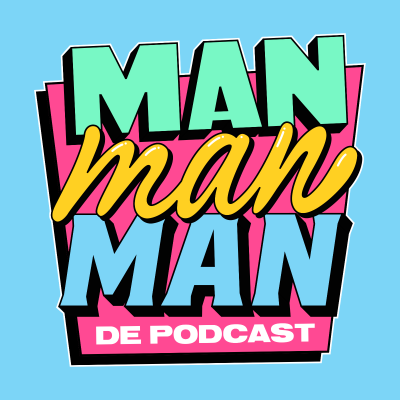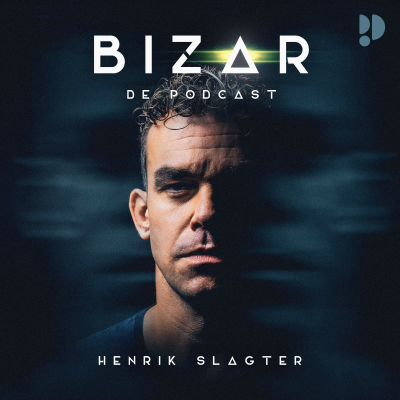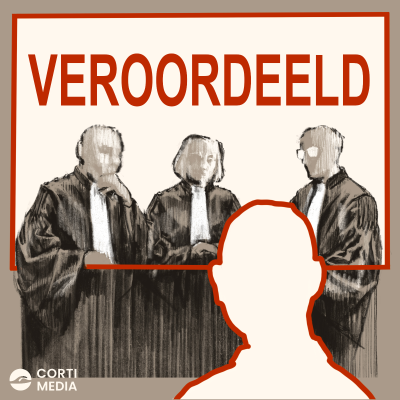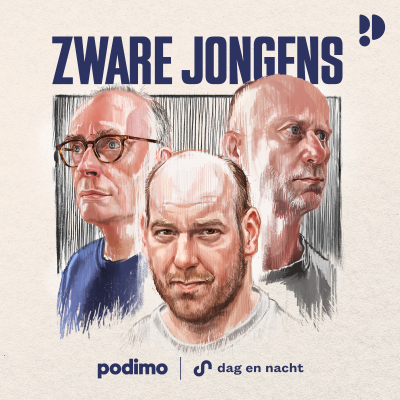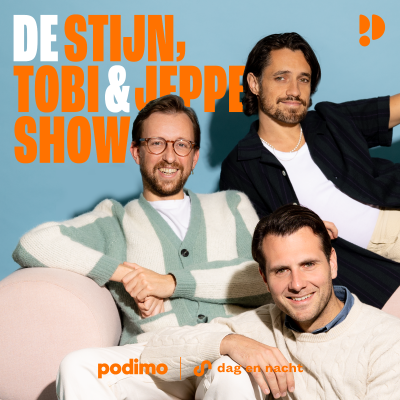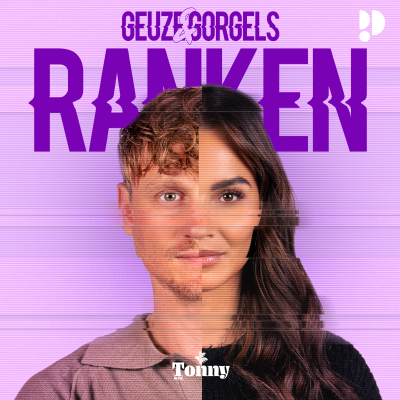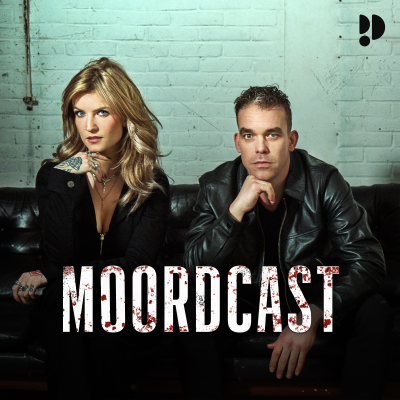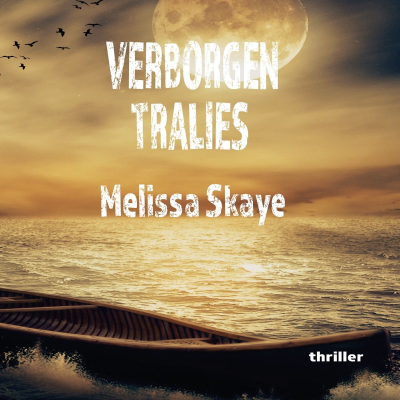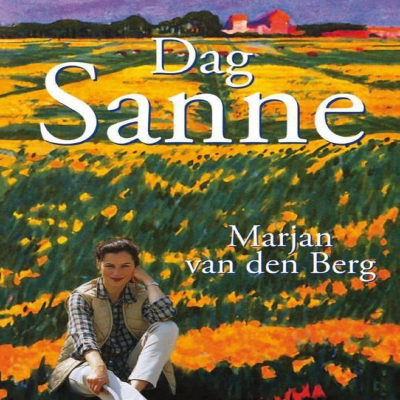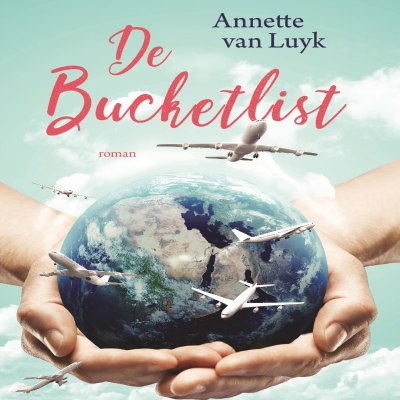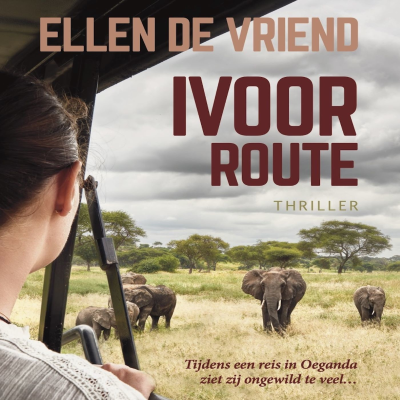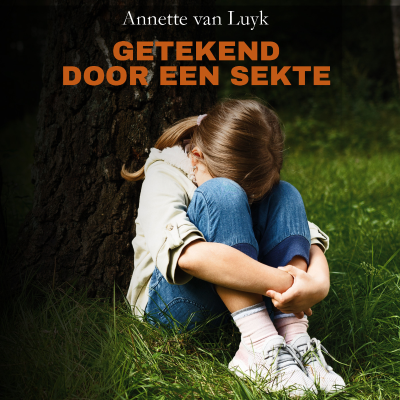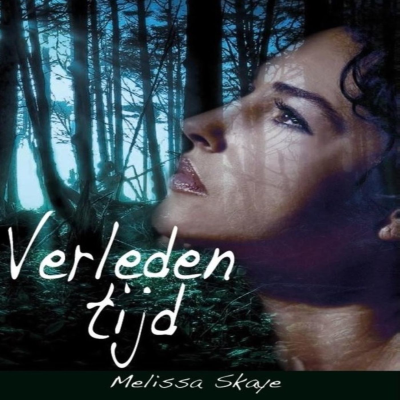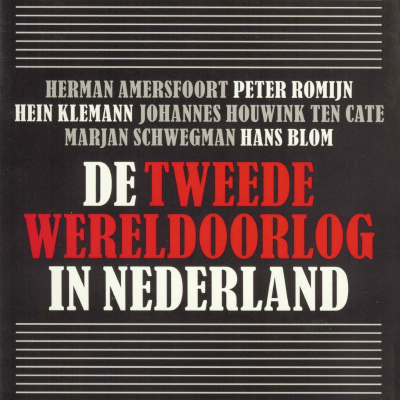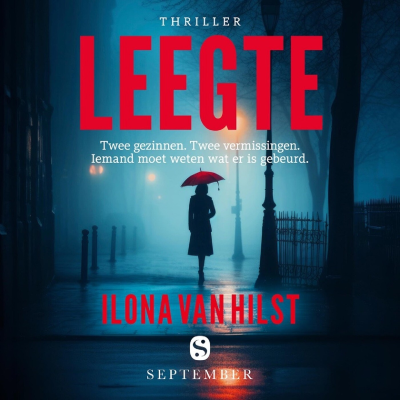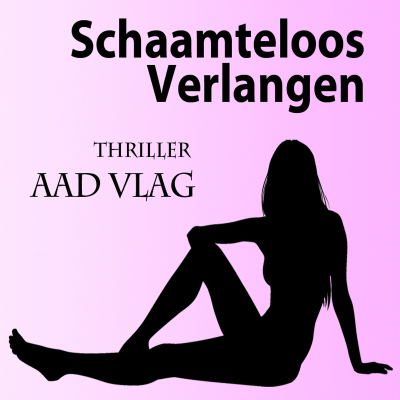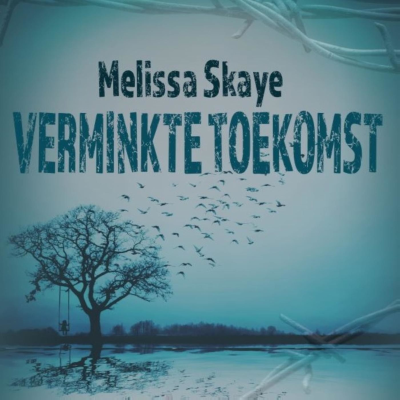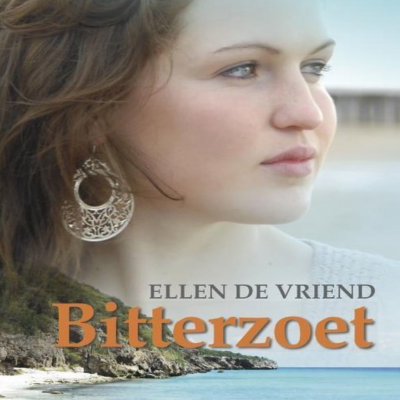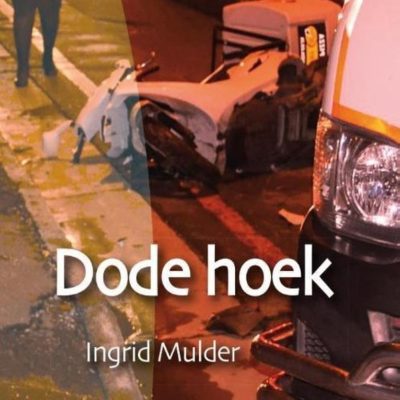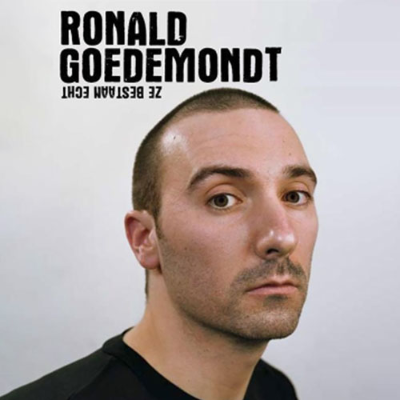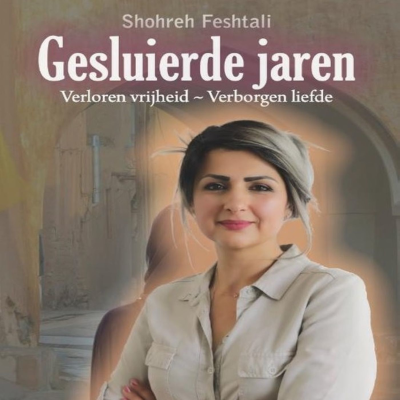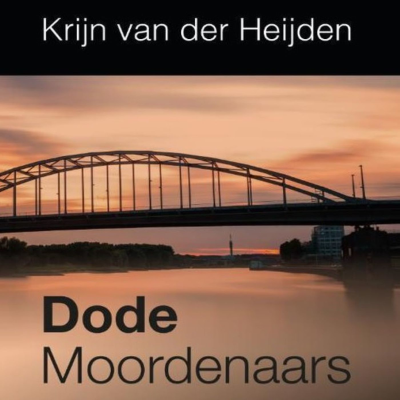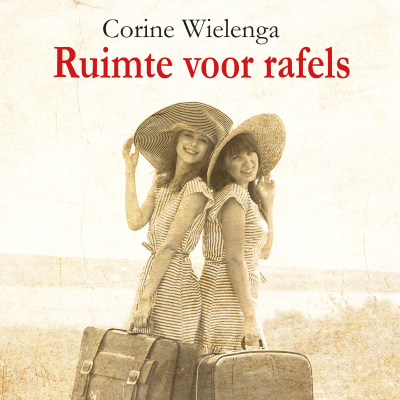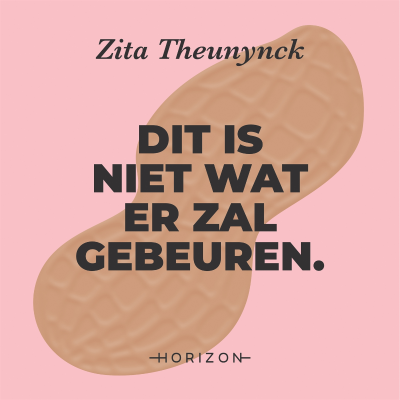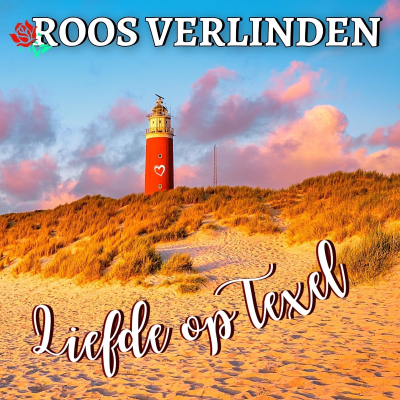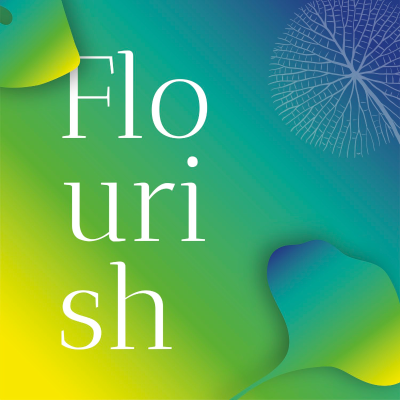
Flourish Systems Change
Podcast door Sarah Ichioka & Michael Pawlyn
What will it take to restore balance to our world for future generations’ survival? Two spirited thinkers, Sarah Ichioka and Michael Pawlyn, discuss a bold set of regenerative design principles, drawn from natural and cultural wisdom, with change agents from around the world. The Flourish Systems Change podcast offers ideas and solutions for designers, clients and inhabitants alike to build a thriving future, together. Connect with us at www.flourish-book.com
Tijdelijke aanbieding
3 maanden voor € 1,00
Daarna € 9,99 / maandElk moment opzegbaar.
Alle afleveringen
12 afleveringenToday, co-host Sarah Ichioka speaks with Professor Dan Hill, a global leader working at the intersection of design, technology, and urban innovation. Their conversation was recorded at, and with the support of, the Melbourne School of Design, where Dan serves as Director.
[https://images.squarespace-cdn.com/content/v1/6033d5e7e8421b4da79256c0/1d9edeb8-1323-4d4c-aea3-935746df5b8f/Brian_smile+credit+Cecily+Eno.jpg?format=1000w] > “Imagination is the process of modeling futures. What if you did this? What if you did that? And of course, imagination and modeling is what both science and art are doing much of the time.” — Brian Eno - Flourish Systems Change For our latest episode, co-host Michael Pawlyn interviews musician, producer, visual artist and activist Brian Eno. Their conversation was originally recorded at The Regenerative Architecture Index event in London, organised by UK Architects Declare and Architecture Today. Brian Eno [https://www.brian-eno.net/] is a pioneering musician and producer of ambient music and electronica, a visual artist and an activist. He is a Founding Member of the Long Now Foundation, a trustee of Client Earth [https://www.clientearth.org], a global environmental charity composed of international legal experts on climate, energy and the environment, a patron of Videre est Credere. He launched EarthPercent in 2021, which raises money from the music industry for impact environmental charities working on the climate emergency. Show Notes Donella Meadows [https://donellameadows.org/] was a scholar, writer and educator who was one of the most influential environmental thinkers of the 20th century. Her canon of works include The Limits to Growth, which was published in 1972 and sold more than 9 million copies in 26 languages. Architects Declare [https://uk.architectsdeclare.com/] is a network of architectural practices across the UK committed to addressing the climate and biodiversity emergency. It was originated by architect Steve Tompkins and Flourish co-author Michael Pawlyn. Built Environment Declares Movement [https://builtenvironmentdeclares.com/#:~:text=BUILT%20ENVIRONMENT%20DECLARES%20is%20a,climate%20breakdown%20and%20biodiversity%20collapse.] is a global petition to unite construction and built environment communities to commit to take positive action in response to climate breakdown and diversity collapse. The Regenerative Architecture Index [https://uk.architectsdeclare.com/regenerative-architecture-index] was launched by The Architecture Index and UK Architects Declare in September 2024 that sets to benchmark practices’ progress towards regenerative architectural practices. Architecture Today [https://architecturetoday.co.uk/] is an independently published British architecture magazine founded in 1989, made available free-of-charge to Architects Registration Board-registered architects, and is published ten times annually. Ed Gillespie [http://www.onlyplanet.co.uk/] is an environmentalist, climate activist and the author of Only Planet. Ed also co-hosts two podcasts, “The Great Humbling” with Dougald Hine, and “Jon Richardson and the Futurenauts - Book of Revelations”, with comedian Jon Richardson and futurist Mark Stevenson. Citizens [https://www.jonalexander.net/] is a powerful toolkit written by John Alexander with support from Ariane Conrad to open up new ways of understanding ourselves and show us what we must do to survive and thrive as individuals, organisations and nations. The “Big Here and Long Now [https://longnow.org/essays/big-here-long-now/]” is an essay written by Brian Eno reflecting on the prevalent attitudes of individuals who focus on short-term gains and immediate concerns rather than considering long-term consequences. Project developer and author Stewart Brand and inventor and computer scientist Danny Hillis are co-founders of The Long Now Foundation [https://longnow.org/] and originators of the 10,000 year clock. The Good Ancestor [https://www.romankrznaric.com/good-ancestor] is authored by philosopher Roman Krznaric and an urgent call to save humankind and the planet through six ways to expand our time horizons to confront the great long-term challenges of our age. Listen to Sarah and Michael’s interview with Roman [https://open.spotify.com/episode/4EdUSbw0ZH7bcVuLnTMjJY?si=499b164b6a0342ec] for the Flourish podcast. ‘Scenius’ is a term coined with Brian Eno that means communal creativity and genius, or as quoted from Brian Eno, “the intelligence of a whole operation or group of people… the whole ecology of ideas that give rise to good new thoughts and good new work.” Lewis Howard Latimer [https://www.lewislatimerhouse.org/] was an inventor, electrical pioneer, self-taught draftsman and son of self-emancipated enslaved people in the 1840s to 1920s who built the modern filament that contributed to the invention of the lightbulb and telephone. Hard Art [https://www.instagram.com/hardart.collective/?hl=en] is a cultural collective of designers, artists, filmmakers, writers, and more standing in solidarity in the face of climate and democratic collapse. James Gustav (‘Gus’) Speth [https://www.gusspeth.org/] is the author of America the Possible: Manifesto for a New Economy and most recently, They Knew: The U.S. Federal Government’s Role in Causing the Climate Crisis. He has served as Dean of the Yale School of the Environment, and as President of the World Resources Institute. Carmody Gray [https://lsri.campion.ox.ac.uk/people/carmody-grey] is an Assistant Professor of Catholic Theology at Durham University that works mainly in the areas of philosophical theology and theological ethics, with focus on science, nature and environment. She is also a columnist for The Tablet. Transcript: Special Episode with Brian Eno: 42 minutes Brian Eno Imagination is the process of modeling futures. What if you did this? What if you did that? And of course, imagination and modeling futures is what both science and art are doing much of the time. Sarah Ichioka Hello and welcome to the Flourish podcast, where we discuss design for systems change. I'm Sarah Ichioka. I'm an urbanist strategist and director of desire lines based in Singapore. I'm delighted to co present Flourish with Michael Pawlyn, who's the founder of Exploration Architecture and a leading architect in regenerative design based in London. Hey Michael, how are you? Good? Michael Hi Sarah, how are you doing? Sarah I'm good. I'm good. It's been a long time since we sat down to record one of these. It’s so nice to have the opportunity to get together again. And reflecting on this special episode, I was thinking that one of the things that I have really appreciated the most about our collaboration is the way that each of us bring these really different and complementary things to our partnership–ideas, references, perspectives–and I was trying to think back to our writing and editing process for “Flourish” the book, and one of the key references that you were really keen to include was Brian Eno. Michael Absolutely. I’ve been interested in his ideas for a long time. Sarah I knew who he was as a cultural figure, but not to the same depth of inspiration that you'd had. So, I think that his work is a key reference that I was gifted by you through the collaboration process, and of course, we go on to mention his ideas a number of times in the book. So, it's really fitting and exciting that this special episode is able to feature your conversation that you had with him. How did that conversation come about? Michael Yes, so there is a bit of a context to this that would be good to describe. I was involved in launching an initiative called Architects Declare a Climate Biodiversity Emergency around the same time that you and I started writing “Flourish”, and that the two became very much parallel projects. Sarah As a side note, I think it's really hard to underestimate how important that is in terms of your personal and professional contribution. So just want to acknowledge that what you co-founded in the UK, how many years ago now? Michael It launched in 2019. Sarah Five years ago now, and has since become an international movement in how many countries? Michael So it's in 28 countries now, and we have over 8,000 companies signed up to a declaration of action. We deliberately set it up to be a very decentralized thing, so as long as they follow various guidelines, it's up to them. Sarah One of the things that you talk about with Brian is sort of movement building and scene building. And I think it's important to acknowledge that you've been a key movement builder. But I think it's fair to say that both our book “Flourish”, as well as the Architects and Built Environment Declare movement have been really heavily influenced by Donella Meadows’s ideas about how to bring about systems change, and in that respect, the Meadows approach is really about intervening at the level of a mindset or paradigm that drives how our systems behave. And the paradigm that we were addressing, or have continued to address together in our collaboration, is regenerative design and development. Michael Yeah, exactly. And in Donella Meadows’s, list of leverage points in terms of priority just below trying to change the paradigm, the next most influential way to intervene in the system is to change the goals of the system. And an idea emerged in the discussions within the Architects Declare steering group of what became called the Regenerative Architecture Index. So we developed this into a partnership with media partner Architecture Today. And the aim is really to recognize those practices who are pushing boundaries in regenerative design, and we deliberately avoided a ranking of winners, and the emphasis is all about sharing ideas. So this interview with Brian Eno took place at the inaugural celebration event of the Regenerative Architecture Index. We were delighted to be sponsored by Interface, who also supported our first series of Flourish Systems Change podcast episodes, Sarah So we have to imagine you as–I understand it from having seen the pictures on socials–we have to imagine you wearing a funny hat made out of kale, was it during this conversation? Michael That was my Cavolo Nero sombrero. Sarah Very posh organic greens. Michael That was part of our theory of change, and it was partly inspired by Ed Gillespie, who said that the way to shift paradigms is to have more fun than the dominant paradigm and show that you are while you're doing it. In other words, throw a better party. Sarah Nice. Well, it sounds from the recording like it was a great party with really engaged audience participation. Michael So encouraging all the listeners to imagine they're wearing an equally wild and regenerative hat. Let's now hear from Brian Eno. I watched quite a few videos of Brian being interviewed in preparation for this, and I noticed that intros to Brian, you know, often go on for about five minutes, talking about his work with David Bowie and David Byrne, his pioneering of ambient music, his work on epic albums. But I want to leave as much time for discussion as I can, so I'm just going to say that as far as I'm concerned, he's one of the most fascinating people on the planet, and there are a few people who've contributed as much to contemporary culture as Brian. So will you please give a massively warm welcome to Brian Eno? Brian Thank you. Michael So I thought we could start with cities. I often think that what we have at the center of our cities says a lot about our values. So, you know, in a traditional, traditional age in Europe, it would have been the church. So that was religion. In a place like Milton Keynes or Dubai, it's the shopping center, which is a bit depressing, because that's consumerism. So what do you think should be at the center of a city or a regenerative city even? Brian Well, there's that very nice book by John Alexander called “Citizens”, and he talks about history being divided into three periods. The first is the subject period where the monarchs and the aristocrats ruled and the subjects were at the periphery of things, and that, the church in the center of the city, or the government building, or the palace in the center of the city, idea. And then he says, the next, the next type of citizen is the consumer. That was 1900 onwards, I guess, where your choices, your freedoms are, freedoms to consume, basically. And he talks about a third era, which is, which he calls the citizen era, which is where we ought to be now. We aren't quite, but we should be now. And this is where, at the center of the city is the is the sort of the forum where people decide things, where people get together and talk about things. Michael When you were in New York, you came up the idea of a Big Here and a Long Now. And I know you prefer talking about stuff in the present than the past, but there are quite a few things that you said a long time ago that seem to be getting more and more relevant as time goes by. So could you just kind of recap on how you came up with the idea of the Big Here and Long Now? Brian Yeah. So I was, I lived in New York for five years, starting in 1978 and I was living in Soho, quite an exciting part of New York, and I'd been there a few months, and I was invited to a party, and it was a posh party a very well-known person giving this party. And at that time, I was staying uptown, and I took this cab to the address I'd been given, and it went, it got into a more and more decrepit and broken part of New York, with those parts of New York where steam comes up out of the pavement, you know, and there's people asleep in doorways and so on. And we finally arrived at this place, and I said, “Are you sure this is the right address?” And he said, “Yeah, it's the right address”. So I rang the bell, and a door opened, and I was in an elevator in this crumbling building that opened into this palace, essentially that the elevator door opened, there was this amazing room - must have cost millions, and I was fascinated that somebody would build a place like that in a, in that part of the city. And I asked the hostess, you know, do you like living here? She says, “Oh yes, I love it. I love being here”. And she talked on about it, and I realized that ‘here’ for her meant that apartment, that outside, she wasn't even concerned about. She never really saw it. She would go down and get into her chauffeur driven car and go somewhere else. And so I thought that's very interesting, because in Europe, you generally think, if you say, I live somewhere, you generally think of Southwark, or, you know, an area you don't just think of I live in. These walls you think of the what's around you the neighborhood. And I realized that New Yorkers didn't really think like that very much. And then, as I lived there longer and talked to people, I would say, what are you working on at the moment? And they would tell me what they were working on that day or that week, and never talk about whether they had a sort of a longer-term project in mind of any kind. And so I thought that's very interesting. In a very fast city like this, people live in a very small here and a very short now. So I thought, actually, I'm kind of interested in the opposite of those. I want to feel that I belong to a big here, and a long now. And the Long Now became the name of the foundation that we started with Stewart Brand and Danny Hillis. Michael And you encouraged people to ask themselves a question, what is your long-term purpose?. And I think you were talking about not, five or 10 years, but what might people say about you 50 years after you've gone? That’s such a good question. Brian Well, we started to try to think in terms of a 10,000 year frame. So we thought that's so impossible to think in those terms, but let's try and we, I don't know if any of you know about this thing called the Long Now Foundation. So it started around the idea of building a working mechanical clock. It's nearly finished now. It's 680 feet high in a mountain in Texas, but the idea was to build something that would last for 10,000 years, and that would work for 10,000 years. So it's really an experiment in trying to think of about the future. You know what's going to happen in the next 10,000 years? Well, all sorts of things are going to happen. Some of them are fairly predictable. Some of them are what you call stochastic. They're going to happen, but you don't know when. Others are entirely random, like we might be hit by an asteroid or something. So let's try to imagine a future that is as uncertain as that, and to see what stance we should take towards it. Now, what difference does it make to our behavior now to think like that? We have a Long Now member here tonight, in the shape of Roman who wrote a very, very good book called “The Good Ancestor”, which is a sort of long now idea of thinking, what's my long-term impact going to be? What things am I doing now, and what difference do they make to the future? How do they fan out? And you know, futures are very susceptible to big changes from very small movements. Now it's rather like, you know, shooting an arrow off, if it's one degree to the left, it ends up in the far future and somewhere completely different. So we were trying to think, in an era when we become more and more sensitive to very, very short durations, you know, femtoseconds and yottaseconds and divisions of time that nobody ever imagined before, wouldn't it be appropriate that we also respond to the other end of that spectrum to very long durations. Now, humans do have a history of thinking in terms of fairly long durations. You know, it said that if you plant an olive grove, you won't get a harvest for two generations or three so people did do that. People did think about their children and their children's children, and made preparations for those and we in general, don't do that anymore, other than by stacking up tons of money in banks. Michael Do you think we might have passed the nadir? I mean, I remember in the kind of late 80s, early 90s, it was very difficult to persuade a client to take any kind of long-term view beyond the completion date. I think things have moved on a bit since then. Brian I think so. Well, I think people's awareness that the way we've lived for the last 200 years or so has created a sort of catastrophic situation. So I think people are more aware now that actions have long term resonances and are more aware that we have to start doing something about them. So I think it is a more familiar thought now. Michael You were talking about a Big Here and a Long Now and then, you kind of extended that to include a wider we, and that actually works extremely well as a summary of what the Regenerative Architecture Index is about, a Bigger Here, a Longer Now, and a Wider We— Brian Wider we, sounds a bit rude, doesn't it? Michael Wider us. Is that better? Brian It might be better. Yeah. Michael And another idea that you came up with quite a long time ago that feels even more relevant now is. Is the idea of Scenius. Can you explain that? For those who haven't heard of it? Brian It's spelled S, C, E, N, I U, S. So one of the things that I've always disliked about art criticism and art history in general is that everything gets located around a few big names, Leonardo da Vinci, Galileo, Michelangelo, whatever, Picasso, as if those things kind of appeared out of nowhere. And I started to think about this really, because I went to a show at the Barbican years ago, which was a show of early 20th century Russian painting. Now that was an area that, as an art student, I was particularly interested in, and I really thought I knew quite a lot about it, more than any other era of painting, really. And in that show, I saw about 70 or 80 artists, besides the ones I'd heard of and I realized that scene was much wider, broader and flatter than I imagined. It wasn't a few big names like Kandinsky and Rodchenko and so on, and then all these other has-beens, nobodies. It was a thriving scene which involved not only the painters, but the critics, the writers, the gallerists, the curators, the salonists, the public, everybody was involved in making that scene. And I suddenly clicked that any cultural situation is a sort of ecosystem and all parts of it is important. You can't subtract a bit and say that's the that's the key part, or that bit doesn't matter. So I started thinking more and more in sort of ecosystemic terms about how things come into being. And this word genius, of course, bedevils the art world. There are geniuses like Picasso, and I thought, but really the creativity of a place comes from a whole interaction between many, many people doing lots of different things. And so I thought it's the scene really that matters, and it's the fertility of the scene. So I came up with the word scenius as an alternative to genius. So scenius is, is a name for communal creativity, if you like, the creativity of a whole group of people. And many of them don't particularly know what their part in it is. Most of them don't, probably, but they're doing it nonetheless. I've just written a little book. Actually, I just finished it on the weekend. Took me 45 years. Michael That’s quite a milestone. Brian It's really short. It was a lot longer, but it took 45 years to make it as short as it is now. But it's about, this idea of, where does, where does creativity come from, who's doing it, and what is important about the interaction between all those people, and who are they? Michael I was going to come on to the book. Brian Oh, thank you. Michael Just sticking with Scenius for a moment, when I heard you talk about that, it made me realize what a poor history education I'd had when I was at school. History was basically Kings, Queens and how good we were at building steam engines, and that was about it. And and actually, you know, some of the so-called geniuses that we were told came up with things- i's simply not true. We're told that Thomas Edison invented the light bulb, but actually the filament he created was rubbish. It burnt out in minutes. And the actual inventor of the modern filament was Lewis Howard Latimer. And it's almost certain, the reason he's not more widely known is because he was Black rather than [white] as Thomas Edison. So there's kind of justice dimensions to your idea of Scenius as well, aren't there? Brian Yes, and also there's sort of the dignity of what so called ordinary people are doing with their lives. And it turns out that when you study any scene like when I got very involved in it and looking into how the Russian scene had developed in the early 20th century, and so involved that I ended up living in St Petersburg for a while, I just wanted to find out what had really happened at that time, because It was an incredibly fertile 10 or 15 years, then so much was going on, and I wanted to find out who was doing it. And it turned out it was really, really lots of ordinary people involved, and a few people who became superstars. And I thought that's such a good message to say to people that. Look, you're all doing it already. It's just a question of who, who ends up getting recognized. It's a media issue, actually. Who do they choose to spotlight? Michael So coming on to your book, how change happens is a subject that I think deserves more discussion, really, and it's something that you've talked about a lot, I think, in really interesting ways. And one of the things you said a while ago, as well as in your book, is that humans are able to imagine things before they are real. Could you kind of expand on why that's so significant? Brian What is the great human talent? The great human talent is to be able to experiment with things in your mind before you actually experiment with them in reality. So we can imagine a bridge. We can even make drawings about it, and we can even make stress tests of those drawings, if you like. So we can see whether something is worth doing in quite a sophisticated way, and we don't have to only find out by experiment, which, of course, in making bridges is a sort of dangerous activity. Let's just try it out and see if it works. Though quite a few architects do seem to do that. I have to say nothing. Nothing against architects. Michael Don't worry, Brian. Brian But you know, imagination is the process of modeling futures, isn't it? It's what if you did this? What if you did that? And of course, imagination and modeling futures is what both science and art are doing much of the time. The difference is that in science, you you discover and test. In art, I think, you imagine and digest and you model by what you're really modeling for is your own feelings about things. What would it feel like if I made this so you know, you could say that 1984 the novel is, is really a way of saying, what would it be like to live in a completely totalitarian society? Well, the great thing about art is that you can find out your answer to that without having to live in a totalitarian society. You can test out your feelings, so you can build up a repertoire of sort of experiences, they are virtual experiences. And we're very, very sophisticated at doing that. You know, from the age of two, if you say to a child, “once there was a giant”, the child imagines a giant suddenly that that becomes real. So, you know, we can do five orders of theory of mind. I know that he doesn't like what he's said about what she thinks about her dress. You know, that's, we do that all the time, but that's such a sophisticated kind of modeling process going on. Michael You talked about how, when someone sets out a really bold vision, people start comparing reality with that vision, and it becomes an almost sort of invisible force pulling reality, pulling that vision into reality. Brian Yes. So I think one of the ways art works is you can think of an artwork as a sort of relic from a future that hasn't happened yet. So you make something and it comes from a world of some kind of set or nest of values, and from that you can kind of extrapolate out into the rest of the world. So one of the things I talk about in in my very short book is haircuts. Well, it's one of the only artworks that everybody makes or shares, apart from me and you, of course Michael You had to mention that. Brian But you know, what is somebody doing when they're getting a haircut? They're making a lot of choices about where they want to locate themselves, culturally, if you like, do I want to look rebellious? Do I want to fit in? Do I want to look older? Do I want to look younger? Do I want to look fanciful? Do I want to look staid. All of those things that they're all decisions about culture, actually, in a way, about where you locate yourself in culture. And the fact that we can all, we can, read those decisions, indicates that we're all very skilled at playing that cultural game without even ever thinking about it. Most people never think about their haircut in those kinds of terms. But most of us don't think about culture in those terms at all anyway, and this is partly because we've managed to marginalize cultural activity as a sort of dessert. And the main reason I wrote this book, actually, I've talked about this stuff for years, but I was at a party a few years ago, and there was a 15-year-old girl. She was the daughter of the host, and I started talking to her, and I said, “What are you doing at school?” And she said, “Oh, well, I really like doing art, but they said I'm too bright to do art, so they want me to do, you know, science and technology, or financial tech, whatever, some shit subject”. And I said, “Well, why don't you insist that you really want to do art”. And she said, “Well, nobody wants to encourage you to do that now at school, because it's considered to be for the less bright kids”. If you've got a chance to make a lot of money, you should go for that and financial technology, that's where you do that kind of thing. So, I thought it's so sad that she doesn't have an argument to respond to that pressure with so and then I started thinking, Well, of course, most people in government don't either. That's why they when they cut budgets for things, it's always the theaters and the libraries and so on that go first, because we, even us artists, don't have a fucking clue how to defend what we're doing. It's amazing. I once asked 20 scientists, what are you doing? What do you think you're doing? How are you describe what you're doing? And they all came up with quite a similar answer. And everyone, each one of them was sort of saying, I want to understand how a certain bit of the world works. That's what you call science. When I asked artists, they sometimes were quite offended that they should even be asked to describe what they were doing, as though that would somehow possibly burst their creative bubble or something. But anyway, the answers were quite different and confused, and maybe that's partly something to do with the difference between art and science. But I thought it's terrible that we are so bloody inarticulate. Michael You capture it really well in the book where you say, “science makes models of things, so we can understand how they work. Art makes models of things so we can understand how we work”. Brian Brilliant. Michael Who wrote that?! But I wondered, if you've got any kind of provocations you could give to architects about what should we be doing, or perhaps, what should we not be doing? Last time we were talking about the Discordian movement, how they're an obscure bunch who believe that there's no underlying order to the cosmos, and they opposed all forms of dogma, so much so that they coined a new term, which was catma. And a catma is an idea that only sticks around for as long as it's useful, and then it sods off, yeah. So is there anything that makes you feel particularly catmatic? Brian Well, when you said, What's a nice thought for architects in the future, I immediately thought of Stewart Brand's book called How Buildings Learn, which I don't think was very popular with architects. Maybe it's very naive, I don't know, but I thought it was a great book. But there's a line in there where he says, he says 80% of architects never revisit the buildings they've made. And he says, you don't finish a building, you start a building. So, this is an idea that a building shouldn't be something that is unchangeable and impermeable. It should be built to evolve and to change. He also pointed out that most architects given this how long it takes to build things and how long it takes to be asked to build something. He said most architects get one chance to change their mind. That's when the first lot of buildings they've made appear. And then you could then sort of say, yeah, that was a good idea, but that one wasn't so good, and so on. So you get you get one chance. I get a new chance every day with what I'm doing. So this idea of leaving the building in a state, that means that it can adapt, that it can become something different, which comes down to some very simple things, like making walls that are easy to reshape, not having them in absolutely untouchable materials, unchangeable materials. Michael Why don't we take some questions now. Question from Audience I want to hear your thoughts about, you mentioned that human beings can imagine something before they do it, and then later on, you mentioned this thing of the speed at which we build things. Yes. So quite often, when I try and point out it's worthwhile keeping a tree, I also point out that we can send a person to the moon, but we still haven't figured out how to build a tree faster. Likewise, carrots know how to make themselves over and over again without an imagination, I guess. But I just wanted to if you could riff on that a little bit with your amazing mind. That'd be amazing. Brian He's the man you should ask about this really. This is so interesting that we're really only just now starting to actually learn from nature and starting to learn of this complexity and sophistication of it, and starting to be able to learn lessons from it. So, you know, we're natural controllers. Human beings are very good at control. We're very good at making things that make nature do the things that we want. What we haven't been so good at recently, during our control era, is surrender, which is letting something happen to us and seeing what it does, understanding it from being subject to it, sort of thing. It's a little bit, yeah. Anyway, that's a whole subject surrender. It's, in my book, it's about a third of a page. Michael Thank you. Next one, and there's one over here. Question from Audience There are people in prison at the moment, the Just Stop Oil activists. Are they prisoners of conscience or misguided fools, in your opinion? Brian Oh, well, then I think they're doing really important work, it's a shame they have to do it in such a way that it pisses a lot of people off, but thank God they're doing it. I write letters to them in jail because I think they deserve a bit of cheering up. You know? Why aren't we all doing it? Why aren't we all out in the streets saying you've got to do something about this. We should be really. Michael and I both belong to this thing called ‘Hard Art’, which is a kind of eclectic assembly of people from lots of different disciplines that meets at my studio every couple of weeks, and it’s sort of the kind of center of what we're doing. How. How do we use culture to change people's minds, to make what we need to do seem, not only acceptable, but actually inevitable and really enjoyable too. We don't want it to be a terrible sort of grind that we have to do this thing. We want to say this is the most exciting project. The most exciting project now is trying to save this planet from complete destruction. Michael Do you know that quote from James Gustav Speth? He said, “I used to think that the top environmental problems were biodiversity loss, ecosystem collapse and climate change. I thought that 30 years of good science could address these problems. I was wrong. We need a cultural and spiritual transformation, and we scientists don't know how to do that.” Brian Yes, that's completely true. One of the people associated with Hard Art is this wonderful Catholic theologian called Carmody Gray, and she talked to us once and said 50 years of data hasn't changed anybody's mind. It's got to be addressed to the feelings, actually. And the problem with data and statistics is that what it says to most people is this is nothing to do with you. This is something that experts will deal with you couldn't understand this. And so I think what we have to do is to make it real at a level of feelings. This is part of me. You know, people don't have any trouble. You don't have to persuade anyone to protect their children, for example, you really don't have to put too much effort into that. People want to protect their children. And it should be quite easy to point out somehow or other, that protecting your environment is a similar quest we shouldn't have. We shouldn't have to say to people, there's a 72% chance that within 11 years, there'll be 38% less coastline or something like that. That isn't going to work. So, so what we've been talking about is, how do we make it the biggest cultural project? That's a long story, but we're still working on it, and we have very few results to show so far, but it's getting better. Michael We can come back to that. So we have one more question. Question from Audience I just want to say I think everything that we're speaking about within architecture is playing into the Big Here, and the Long Now and how we make and consider decisions. You know, only build when you really need to, involve as many people in a co-design process as possible. And I felt quite in conflict with what you said about build fast. And I just thought, could you just explain a bit more about that recommendation that you gave? Brian Well, there are a lot of things that we do build fast. We build fashions fast, and we build pop records fast. A lot of things that we love the speed of turnover. So I think what we have to try to sort out is which things have possibly devastating, long term consequences. We probably shouldn't build those things fast. There are some things we could constrain less and there are some things we should constrain more, like what water companies can do with water, we should take that more seriously, but we have a sort of blanket level of seriousness that applies to everything, and that, I think, stops improvisation. So we ought to think a little bit more about the long term of things. Michael And Stewart Brand talked about different layers of a building. Some things you should, you should kind of build slowly, that might last for 1000s of years. Other things can potentially be much more ephemeral, and then it's much more important to use the right materials for those so they can be completely absorbed back into nature or endlessly recycled. Brian We also, Stewart and I came up with a diagram for sort of the whole of culture, which are the bits that really should be stable and which bits can move. So, it kind of goes from deep culture, the deepest beliefs of a culture, if you like, to fashion essentially and it's not to say that those are those fast-moving things are more trivial. It's just that they move faster. It's just like we're used to the idea that some insects live for a few days and some turtles live for 600 years, and it isn't a hierarchy of importance, it's just saying that there are many different levels of things that have to coexist and need each other. Michael Great. Let's all join in. Thanking Brian. Thank you. Sarah Well, that sounds like it was such a lively gathering and conversation and so much to think about in it. I think the biggest takeaway for me was Brian saying that he's written a little book. It was a lot longer, but it took 45 years to make it as short as it is now, because I think in the course of us collaborating on writing, but really any project now, I feel like there is so much noise and it's so easy with digital technologies to just go on forever. And what’s needed right now to help sharpen our collective clarity of vision towards action is precision. So, I thought that was really a powerful message coming from this world-renowned creative mind. But I was also really intrigued, Michael, this Hard Art group sounds so exciting and fun, and I know that you're participating in it now. Can you tell us a little bit more about what that experience is like? What are you working on with Hard Art? Michael Brian Eno has become steadily more involved in the whole environmental movement, and he's been involved in Client Earth, which is an environmental charity that is largely about using law to create powerful change to protect Planet Earth and with Hard Art, that quote that I mentioned from Gus Speth, I kind of had that in reserve in case Brian asked me to explain Hard Art at the event. And I'm increasingly coming to the view that to address the planetary emergency, we need a cultural transformation as profound as the Copernican revolution. And that's why I think it's really important that artists and creatives get involved in this. Because up until now, the sustainability movement has tended to be quite technical. It's often involved a blizzard of facts. And I think we really need to expand on that. And I have met some artists, not in Hard Art, but other artists who kind of push back and say, “Well, why is it down to artists?” And the point that you and I made in Flourish is that we all need to get involved. We all need to maximize our agency so that we get this kind of expanding wave of agency maximization right up to the highest levels of governance. Sarah And it comes back to collaboration as well, right: how do you build the scenius around that expanded agency in a way that feels joyful. I think there's so many reasons to feel things like despair, to feel despondent, but just the idea of, how do we work together and come together to hold each other in joy and possibility and even fun, how it doesn't just feel like hard work? Michael Yeah, exactly. Sarah One of the other key thoughts that was coming up for me listening to your conversation with Brian was just how nice it is to hear from someone who's able to bridge them naturally between disciplines. That seems like a strikingly important part of the perspective that he brings to conversation. Does that resonate for you? Michael Yeah, absolutely. And he has a warmth and humour about him. And for me, he remains one of the most inspiring changemakers. And as a polymath, he's able to bridge art and science, which is so essential. Sarah So we know we've been a bit sporadic with these episodes, but we do have plans to keep producing special episodes when there are opportunities to speak to these amazing folks. One of the ways that you can help us do that is to be sure if you've enjoyed this episode or any of our previous episodes, to share it with colleagues, friends, family, who you think it might spark an interesting conversation with. Similarly, give us a positive rating, subscribe or follow our podcast. Every little bit helps to make sure that we're bringing these conversations to as wide an audience as possible. and building the Flourish scenius. Michael Nicely put and yeah, we look forward to sharing another episode soon. Sarah The Flourish podcast is recorded at Cast Iron Studios in London and the Hive Lavender studios in Singapore. Our co producers are Kelly Hill in London and Shireen Marican in Singapore. Our research and production assistant is Yi Shien Sim. The podcast is edited and features brilliant original music by Tobias Withers. Podcast cover art by Studio Folder [https://www.studiofolder.it/]
[https://images.squarespace-cdn.com/content/v1/6033d5e7e8421b4da79256c0/17715465-df29-4077-a001-6ff08227c683/Lyla+June+Main.jpg?format=1000w] “There's many ways that human beings around the world have not just not hurt, but have actually been a beautiful gift to the Earth, a keystone species that actually has become a linchpin in the healthy functioning of the ecosystem. And we treated the Earth so good, that She would actually miss us if we left. That's what I'm encouraging people to try to become again.” - Dr. Lyla June Johnston - Flourish Systems Change For this episode, co-host Sarah Ichioka interviews Indigenous musician, scholar, and community organizer Dr Lyla June Johnston, in an extended version of a conversation originally recorded as part of Sarah’s Designing Cities for All Fellowship at Pakhuis de Zwijger [https://dezwijger.nl/programma/stewardship] in Amsterdam. Dr Lyla June Johnston (aka Lyla June) is an Indigenous musician, scholar, and community organizer of Diné (Navajo), Tsétsêhéstâhese (Cheyenne) and European lineages. Her messages focus on Indigenous rights, supporting youth, traditional land stewardship practices and healing intergenerational and intercultural trauma. She blends her study of Human Ecology at Stanford, graduate work in Indigenous Pedagogy, and the traditional worldview she grew up with to inform her music, perspectives and solutions. Her doctoral research focused on the ways in which pre-colonial Indigenous Nations shaped large regions of Turtle Island (aka the Americas) to produce abundant food systems for humans and non-humans. Show notes Sarah Ichioka and Michael Pawlyn’s book, Flourish: Design Paradigms For Our Planetary Emergency is available as a paperback and ebook from Triarchy Press [https://www.triarchypress.net/flourish.html] and major online booksellers; and as an audio edition on Audible [https://www.audible.co.uk/pd/Flourish-Audiobook/B0BGYDCFVM?pf_rd_p=c6e316b8-14da-418d-8f91-b3cad83c5183&pf_rd_r=X68A1MVG9W7282GND9BD&qid=1664987444&ref=a_search_c3_lProduct_1_1&sr=1-1], Apple Books [https://apps.apple.com/uk/app/apple-books/id364709193] & Amazon [https://www.amazon.com/Flourish-Design-Paradigms-Planetary-Emergency/dp/B0BGYNCRK6/ref=tmm_aud_swatch_0?_encoding=UTF8&qid=1658493814&sr=8-1]. Sarah leads Singapore-based Desire Lines [https://www.linkedin.com/company/desire-lines/], a strategic consultancy for environmental, cultural, and social-impact organizations and initiatives. Michael leads London-based Exploration Architecture [http://exploration-architecture.com/], an architectural practice and consultancy company focused on regenerative design. Pakhuis de Zwijger [https://podcastluisteren.nl/ep/Pakhuis-de-Zwijger-Sarah-Ichioka-on-the-cultural-transformation-we-need-for-our-planetary-emergency] is a cultural center and event space located in Amsterdam, Netherlands. The Designing Cities for All RE-generation Fellowship [https://dezwijger.nl/dossiers/dcfa-regeneration] focuses on the role of design in (re)shaping and (re)creating regenerative cities by, for and with everyone and every living thing. Read more about Lyla June and her work [https://www.lylajune.com/]. Watch Lyla June’s TEDx talk in 2023 on the “3000-year-old solutions to modern problems [https://www.youtube.com/watch?v=eH5zJxQETl4&t=12s&ab_channel=TEDxTalks]”. Lyla June writes and performs a poetic reflection on time and the wisdom needed to care for future generations in the music video, Time Traveler [https://www.youtube.com/watch?v=ulK_GE9XjO8&ab_channel=EmergenceMagazine]. Lyla June’s music video for All Nations Rise [https://www.youtube.com/watch?v=nr2VLI8jKww&ab_channel=LylaJune] written and performed by her at the Black Hills Unity Concert 2016. Read Lyla June’s article on European indigenous knowledge [https://moonmagazineeditor.medium.com/lyla-june-reclaiming-our-indigenous-european-roots-64685c7fc960] in the Moon Magazine. Learn more about Paulo Freire’s ‘Pedagogy of the Oppressed’ [https://daily.jstor.org/paulo-freires-pedagogy-of-the-oppressed-at-fifty/] on JSTOR Daily. Transcript Episode 10: Special Episode Lyla June Johnston: 31 minutes Sarah Ichioka Hello everyone. It’s been a while, and a lot has happened, but it feels great to be back to share another special episode of Flourish with you. Today, we’ll be hearing from a very special guest indeed, Dr Lyla June Johnston. Lyla June is a multi-talented Indigenous artist, academic, and community leader, representing Diné, Tsétsêhéstâhese, and European heritage. Through her music and activism, she champions Indigenous rights, youth empowerment, and traditional land stewardship, while addressing intergenerational and intercultural trauma. Her studies in Human Ecology at Stanford, her graduate research in Indigenous Pedagogy, and her upbringing steeped in a traditional worldview, all combine to infuse her work with insightful perspectives and solutions. Her doctoral studies delved into how pre-colonial Indigenous Nations across Turtle Island (otherwise known as the Americas) cultivated bountiful food systems for both humans and non-humans, offering valuable insights into regenerative systems—the focus of this podcast. We first recorded this interview last year as part of my Designing Cities for All fellowship with Pakhuis de Zwijger in Amsterdam. That was a series of public discussions exploring how design can play a role in creating regenerative cities that are better for everyone who lives in them. We’ll link to the whole programme in the show notes if you’re keen to learn more about it. A small technical note: because we recorded this conversation over Zoom originally, there might be a few robot noises now and then despite our sound engineer Toby’s best efforts, but trust me, this one is well worth listening to. Michael is away this week, but I know he is just as excited as I am to share this episode with you. So let’s dive in. Sarah Ichioka Welcome to Designing Cities for All Dr. Lyla June Johnston. Lyla June Johnston Thank you so much for having me, so happy to be here. Sarah Ichioka We are so happy to have you with us. Where are you joining us from, and how are you feeling there today? Lyla June Johnston I'm joining you from a little town called Gallup, New Mexico area. And I'm feeling great. I'm in the forest with my sheep. And you can't really get better than that, so I'm feeling great, and so happy to add our little vantage point to this global event. Sarah Ichioka Thank you. So an increasing number of people are embracing the understanding that Indigenous forms of land stewardship and knowledge are key to reweaving regenerative culture and its associated practices. And of particular interest to the audience today, many designers are searching for ways that they can care for and augment the many other beings that give us humans life instead of the business-of-usual of extracting and destroying. And so it's an amazing privilege to have you with us today because of your doctoral research, which I understand focussed on the ways in which pre-colonial Indigenous nations shaped large regions of Turtle Island to produce abundant food systems for humans and nonhumans alike. Based on that work, in what ways would you hope to see Indigenous land stewardship practices valued in the transformation of broader contemporary culture? Lyla June Johnston Well, I think the denigration of Indigenous knowledge worldwide has not only deprived Indigenous peoples of our cultures, our lands, our lives, but it's also deprived the entire world of the extremely sophisticated sciences that are the byproduct of when you live in one place for thousands of years. So what I would like to see is not just more recognition of Indigenous knowledge, Indigenous sciences, Indigenous design, if you will, but also just more integration, and more humble observation, humble listening. Because we have so much to teach, and we have been trying to teach people for centuries about this stuff. In some cases, millennia, depending on which Indigenous culture you're talking about, that suffered from colonization and domination ethic. But we have so much to teach, and we've been wanting to teach it for eons. And so I think the time is now not just for the non-Indigenous world to start taking notes, but also for us, as Indigenous peoples, to really build up our home fires, really get clear on what our messages are to the world, because the world, like you said, is turning to us now. And we need to be prepared. And many of our elders are already prepared. They know back to front the songs, the ceremonies, the ways of tending the land, which is what my dissertation looked at. And it's time. It's time to do a knowledge transfer that can benefit all life, not just Indigenous peoples, not just non-Indigenous peoples or colonial societies, but literally every single living being on this planet is going to benefit because that's what our systems were designed to do. To augment not just life but biodiverse life. Sarah Ichioka Fantastic, thank you. And obviously righting historical wrongs also means working to return stolen lands, to their original caretakers, not just adopting or mimicking native practices, which I think is one of the one of the challenges we can see in this discourse within the design field. And I've been really struck how you often speak about forgiveness in your work. The way that you see land, restitution and reconciliation as crucial to restoring regenerative systems. And I understand that you view forgiveness not as a hindrance to the struggle for rights, but rather something that allows us to fight more effectively. Would you be able to share more with us about this? Lyla June Johnston Yes, and before I do, I just want to touch on a point you said earlier, which is that one other thing and in addition to the integration of Indigenous knowledge is the reparations, if you will, or righting historical wrongs. Because I think it's very tempting to be like “Oh, Indigenous peoples did this, let's do it now.” But if you're applying all of those practices on stolen land, then you might be healing the soil, you might be healing the biodiversity, but you won't be healing history. And I think true, deep regenerative practice actually heals not just the land, but heals history, heals relationships, heals hearts, and heals spirits and emotions. And I think that's the most exciting part about Land Back, this movement of returning lands that were stolen from Indigenous peoples. So that's exciting work that not just Indigenous peoples are excited about, but everyone who's engaged and really wants to shift things on a deeper level. But yeah, I think the way that forgiveness facilitates our movements, is that it relieves us of the last wound that colonization has inflicted, which is the wound of bitterness. I mean, there are many other wounds, but once we heal, and we realize that colonization never changed us, that these things were lies et cetera, then we get to, we have to address the bitterness. And when that bitterness is transformed into compassion, this is just my opinion, many people disagree with me, but that compassion makes us more fluent, you know? It makes us more clear. Easier said than done sometimes when your entire village has been murdered, you know. But what I found is that the deeper the injustice, and the more atrocious the crime, the more powerful forgiveness is when it is applied. It shakes the whole Earth. When you get hit with so much hatred, and you still stand up and say, “I love you”, and you still affirm to the people who hurt you like, “Hey, I'm not your enemy. I am your relative”. That is the reality, because colonial society has tricked us all into thinking we are enemies, we're divided, we're in competition. But the truth, the deepest truth, I think, of nature and of reality, is that we're all relatives. That's what all Indigenous ethics talk about, kinship. Never address someone as “Hi, Sarah”, but say “yá’át’ééh shádí” (Hello, my older sister), or “yá’át’ééh shidéizhí” (Hello, my younger sister). You always greet not just people, but animals, plants, the earth as your kin, as your mother, your grandfather, as your sister. And so, that being said, forgiveness to me is like taking all of this division, all this hatred, and just pushing back on it saying, “No, we are relatives, and I'm here to fight for you as much as me, including fighting for your spirit”. And so forgiveness to me not only clears us of that bitterness, but it reiterates and reifies the reality of kinship. Sarah Ichioka And it's clear that this relational way of seeing and being in the world is so necessary and often still missing from the way we talk about our manifold global challenges, you know, foremost in my mind, the climate crisis. To go back to the point that you were making about knowledge exchange and learning exchange and an attitude towards that, could you share from your research into Indigenous ways of teaching and learning, what are some of the key characteristics of exchange that you've identified? And do you think any of these could help us in broader industrialized society as we seek to find our way forward and through the climate crisis? Lyla June Johnston Yeah, I mean, I was honored to work on community curriculum development with Diné people, which I failed to say I'm from the Diné nation on my mother's side, and our clan is the Naaneesht’ ézhi Táchii’nii clan. We're also incorrectly known as Navajo. But I was fortunate enough to work with about a hundred Diné people to create our own teaching and learning systems and take it back from the boarding schools. Because in what we now call the United States, there's this whole system of boarding schools that's stolen our children and forced them into. Many of them died in the schools. And so we lost our right in our power and our practice of educating our own children. So we kind of took that back and we said, “Okay, what would we teach? What would we learn if we had autonomy over our school systems again?” And what I found was an Indigenous pedagogy, at least the Diné pedagogy with this particular group really was a circle. In many ways, for one thing, in a circle of teaching, everyone is a teacher, and everyone is a learner. So when you apply that to the climate crisis, when you apply that to the broader context of so many of the issues that we face globally, you understand that every single country, every single culture within that country has a puzzle piece to contribute to a solution. And every single one of us could benefit by learning. Because when you have biodiversity, you have many different genes to draw from. In the case of a catastrophe, you have many different species who can bounce back. It's harder for a pest or a virus or blight to wipe everything out, because no one pest can hack that many species all at once. So biodiversity forms resilience within ecosystems, but the same is true for the human worldview. A broad and robust diversity of perspectives is so much more strong and resilient than the monoculture that we have now, which is Eurocentricity. Europe knows everything, everyone else is stupid. Basically, that’s what the narrative has been for, like, at least 500 years. And not only European knowledge, but Greco-Roman European knowledge because even European tribes got wiped out by the Roman expansion, et cetera. And so, because of this monoculture, I think we're suffering right now we're applying this one way of seeing things, which yes, has some strengths, absolutely, but has a deficit in all these other places, which all these other cultures could have filled, all these other cultures could have helped. And what we're doing now in this call, really, we're trying to supply that deficit. So when we have the diversity of Yoruba traditions, Gunditjmara traditions from Australia, S'gaw K'Nyaw traditions from the hills of Thailand, we have Okinawa perspectives mixed with Diné perspectives mixed with Mapuche mixed with Welsh and on and on and on. We will actually have all of our questions answered, because everyone has a piece of the puzzle. So I think that’s one of the biggest applications that Diné teaching and learning could offer: is that the Circle of Learning, that everyone's a teacher, everyone's a learner. And there's way more I could say, but I think that's the biggest thing that our curriculum development experiment really elucidated for me. Sarah Ichioka I love it, thank you. I know that the team at Pakhuis de Zwijger, who are hosting this, have been thinking a lot about how the structure of their events can help to facilitate. So it's not just us talking down at a screen, right. There's full exchange in the audience. And I love that idea of everyone sitting in a circle, and exchanging knowledge and learning. Lyla June Johnston And that's what Paulo Freire said too, if you read Pedagogy of the Oppressed. He said it's not about teaching someone something, because the person you're teaching actually has something to teach you. It's about creating a dialogical teaching container where the question is centered, everyone else works to answer it together. And that it's honoring the agency, the knowledge and the power of every student in the room. Whereas if you just sit someone down and say, “I'm going to tell you something”, that's what Paulo Freire called the banking means of education, we're just depositing something into his empty account. And he said this is not going to serve the teacher or the student. Sarah Ichioka I want to go off on a tangent from that to talk about ways of communicating in ways in particular that you communicate and interrelate in your work. So in complement to or full integration with your work as a scholar, you're also an activist and a musician and your performances combined speech, poetry, hip hop and acoustic music. And clearly effective communication and the power of persuasion is essential to rallying people to collaborate and take action, especially on these urgent issues that affect us humans and other species. And how do you feel that combining your different modes of presentation or expression help you in communicating effectively about the urgency of this effort, the turn or return towards regenerative culture? Lyla June Johnston Yeah, I mean, I just want to shift to narratives, all kinds of narratives. Whether it be the true history of Indigenous peoples in Turtle Island, aka America, or it be our narrative about ourself, you know, no matter what culture you're from. How do you fall in love with yourself again? How do you heal those parts of you that you don't love anymore, which I had to do a lot of growing up. Changing the narrative of what ethics should drive our actions? What value systems? Why is profit maximization here as a goal, you know? So in the practice of narrative change, and culture shift, some people call it, you need to read diversity of, in Diné we call it ałtas’éí, which means just like many different, multicolored things. So we even have a really important word in our language ałtas’éí, which talks about diversity. And so yeah, I wrote a PhD dissertation that speaks to one audience. I do education where I'm not even talking but the community is talking to themselves, that's another audience. The music of course, not even in music, I couldn't pick which genre why limit to just one? Then also just, you know, radio, working on radio. We just produced a really cool series about the Winnemem Wintu Nation in Northern California. I have a podcast, Nihizhi Our Voices: An Indigenous Solutions Podcast. You could say, I'm spreading my energy too thin. But I think it also keeps me excited. It keeps me alive when I get to, you know, really taste so many different ways of relating with the world. And so I think it's just a matter of, you know, some things work. And then again, like, there's stuff I could say, that you couldn't say, and there's stuff you could, there's people you can reach that I can't reach, you know, we need you. I was once told you, your body is your passport to reach the audience you prayed to come to earth to reach. And so each of us has a very, very purposeful design. That's what I was taught by Creator. And so each of us, we need all of us to speak about regeneration, if you will, in our own way, to our own people and other people too. Whoever will, like there's something a white man could say that a certain audience would totally grab on to like, oh, because they trust a white guy for whatever reason. And then there's already other audiences that would not trust him, they need me to say it, even though we're saying the same thing. So the same thing we're all trying to say is Love, is regeneration, is selflessness, is service. And so as many different ways we could say that, the better I think. Sarah Ichioka Thank you for sharing that. And we will be sure to include as many links as possible of all of the amazing things that you are involved with in the program notes, and I would strongly encourage everyone in the audience to spend time with these. I wanted to draw to a close by returning to your work on practices of land stewardship. And I was so struck by your reframing, you talked about needing to transform our views of ourselves, and your reframing of humans as not being a scourge upon the landscape are not being a scourge upon the rest of life, but actually being essential to the flourishing of life and of landscapes and of ecosystems. You have found many different examples of this. But would you be able to share one with us today, to help give a sense of what this looks and feels like in practice? Lyla June Johnston Yeah, I was lucky, honestly, and honored to give a TEDxTalk late last year that has now half a million views, which I don't attribute to anything about me. But I attribute it to like the actual stories and the knowledge that I was just the messenger for. Because everything I say is coming from my elders and what they have taught me. And so they're really deserving all the credit and, and the ancestors who did these practices. But what I was talking about how, during the pandemic, all these people are staying indoors, and we started noticing the world, like coyotes running in the streets of the cities, and, you know, pollution going down. And so many people were like, “Oh, wow, well, obviously humans are the problem, because as soon as we go away, everything gets better”. But what I was saying is “No, everything is better when our systems slow down.” But we as human beings actually have a critical role to play, which I believe that role has been stolen from us by years of trauma, by years of warfare. And at the end of the day, fear, you know, fear. When we're in fear, we can't flow as we're naturally designed to flow. That's not to say concerns aren't important, obviously, we're concerned about a train coming towards us. But that fear that drives us to hoard, that fear that drives us to kill et cetera. So basically, some of the examples were, you know, in the dissertation, there's fire, water, earth and air. Sso the fire looks at fire ecology and the ways in which Indigenous peoples here would burn the forest floor every fall, and some of them still do to the point where we have something called the grass-burning moon, we have a lunar calendars that tell us what to do when. So the grass-burning moons like September and October, and we would burn in between the trees which transforms the dead grasses into ash, it opens up meadows, and it protects the old growth from getting crowded by little saplings who steal the limited water, nutrients and sunlight from the forest. And it produces nutrient rich grasses in the spring which are, you know, forage for elk, deer, buffalo, horses, sheep, all these different undulates that used to walk this continent. And so it's just exciting how people's human touch, their human hand, actually augmented life, augmented habitat, augmented spaces for life to flourish. Another example is clam gardens in the Pacific Northwest, some of these Salish Nations and also the Heiltsuk Nation and a little further north will create these clam gardens where they construct intertidal rock walls. And they noticed oh, the clams like these calmer, warmer waters, let's create more spaces where that exists. And so the intertidal rock walls would catch sediment and water as the tide goes down. And they would create these little clam spaces. And we found in the Quadra Island, gigantic island in the Pacific Northwest, 35% of the coastline had these ancient rock walls on it, 35%. 14 kilometers worth of rock wall, and they radiocarbon dated it, this was 6000-year old rock walls. So this is how long people were harvesting clams sustainably, regeneratively from these coastal areas. And within that, it's really important to examine the ethics you know, it's really important to see animals as our equals, because we are animals too. And so what these nations do, they see the clam as having its own nation, nationhood status, so they would treat the clam as if they would treat another nation. And that's how many Indigenous peoples in Turtle Island would afford that label to every single species. They have their own nation, and they have their own communities, families, and just like we want the best for our families, we should support them having the best for their families. I could go on and on, you know, the ancient chestnut forests, the ancient eel farms, the 6000-year old eel farms in Australia, the Bolivian floodplain management. I mean the terra preta in the Amazon where native folks have created, like the entire Amazon basin is covered in these organic top soils that are anthropogenic and human-made in nature. I could go on and on and not just in, you know, the US and South America. Norway, we have examples of people burning, doing prescribed burns thousands of years ago, and Africa. I won't go too into it, but suffice it to say, there's many ways that human beings around the world have not just not hurt, but have actually been a beautiful gift to the earth, a keystone species that actually has become a linchpin in the healthy functioning of the ecosystem. And we treated the Earth so good, that She would actually miss us if we left. And so that's what I'm encouraging people to try to become again. Sarah Ichioka I feel like we couldn't have a more powerful message to end the conversation. But do you have any final questions or thoughts to share with the audience, in Amsterdam and online? In an urban context, many of them trained as designers are interested in design as a discipline. How can this worldview extend to their life and work? Lyla June Johnston I think one of the greatest tenets within the research and I called the dissertation the ‘Excavation of Hidden History’, that was part of the tagline. The whole thing was ‘Architects of Abundance: Indigenous Regenerative Ecological Design and Excavation of the Hidden History’. But because I was just excavating all these stories, like dozens and dozens and dozens of stories, from scientific articles of what actually has happened, is the biggest tenet within them all, is like one of the biggest, is non-human centrism, or ecocentrism, some people call it. So to be ecocentric means the system is designed to benefit all life around you. Now, what is a city almost by definition, it is a human habitat. It is for humans, of humans, and it does not exist to support life around it. Let's just be honest. That's not to say we did that necessarily intentionally or even consciously, because we've been so trained into this human centrism. But it's just to say that obviously, there's some progress being made, but by and large global cities are for humans. And so how do we retool the city to be an agent of nourishment for all life? Frankly, I think they would not look the way they do today, we would not have cities as we know them. So I think it would be a complete overhaul. And that's okay. Because it's in that process of being in service to life, instead of being a leech of life, that we will grow as people and we have nothing to lose, except for our chains and our shackles and our disappointment in our own selves, for nearly destroying the entire planet, we have nothing to lose. So as we transform and retool a city from being human-centric to ecocentric in every aspect, this could mean for example, literally creating habitat in these cities for non-humans. Or some people say more-than-human, this could look like ensuring the city actually gives to the watershed instead of taking away, or actually nourishes the watershed instead of poisoning it, and on and on and on. But it would take a complete overhaul, a renovation to make this a truly non-human centric system. So I think that's how we apply this, and as we think about urban design, you know, remembering that these cities were almost by definition, not in alignment with life. So it's a challenging, but exciting task to transform them into something that is a giver, not a taker. Sarah Ichioka Thank you, Dr. Lyla June Johnston, little sister, I think, not sure… “Little sister”, hmm although I feel like you may be my big sister in wisdom, but maybe a little sister in our trips around the sun. Thank you so much for all of that sharing. And I'm sure that people are going to find it so stimulating and enriching to their own thinking, worldviews and work. Lyla June Johnston Thank you for having me. It's been an honor and a pleasure to learn from you too. And thanks to all the organizers and hope to talk to you all again soon. Sarah Ichioka Wasn’t that amazing? During our conversation I heard from Lyla June about the transformative power of forgiveness, about re-thinking education in terms of mutual sharing, and how blending different modes of expression can help us communicate better. What stayed with me the most from our discussion is her vivid sharing about what land stewardship has, does and can like in practice, and the profound potential of human touch in enriching life on Earth. Thanks for listening and see you next time. This podcast is based on the book Flourish: Design Paradigms for Our Planetary Emergency by Sarah Ichioka and Michael Pawlyn (published by Triarchy Press). Visit www.flourish-book.com [http://www.flourish-book.com] to find where to get your copy, download our book club guide, find full transcripts and show notes for all the podcast episodes and so much more. Michael Pawlyn And for all of you who prefer listening over reading, we encourage you to buy a copy of our audio edition of “Flourish”, narrated by voice artist Nicola Burgess. You can find it on Audible [https://www.audible.co.uk/pd/Flourish-Audiobook/B0BGYDCFVM?pf_rd_p=c6e316b8-14da-418d-8f91-b3cad83c5183&pf_rd_r=X68A1MVG9W7282GND9BD&qid=1664987444&ref=a_search_c3_lProduct_1_1&sr=1-1], https://apps.apple.com/uk/app/apple-books/id364709193Apple Books [https://apps.apple.com/uk/app/apple-books/id364709193] & https://www.amazon.com/Flourish-Design-Paradigms-Planetary-Emergency/dp/B0BGYNCRK6/ref=tmm_aud_swatch_0?_encoding=UTF8&qid=1658493814&sr=8-1Amazon [https://www.amazon.com/Flourish-Design-Paradigms-Planetary-Emergency/dp/B0BGYNCRK6/ref=tmm_aud_swatch_0?_encoding=UTF8&qid=1658493814&sr=8-1]. If there are aspects of Flourish that you particularly like - whether in the book, audiobook, podcast interviews or online lectures, please let us know through our website. We may do a second season of podcast episodes, but no promises just yet. Sarah Ichioka This special episode was co-produced by Sarah and Michael with support from Shireen Marican. Thank you to the Designing Cities for All team at Pakhuis de Zwijger and to Dolphie Bou who supported the original recording. The podcast is edited and features original music by Tobias Withers. Transcript support by Xin Ru Sarah Leong. Podcast cover art by Studio Folder [https://www.studiofolder.it/]
[https://images.squarespace-cdn.com/content/v1/6033d5e7e8421b4da79256c0/2140e11f-f2db-4884-948c-595c1afaac2d/Michael.PNG?format=1000w] > “The idea of being a possibilist is that you decide on the future you want, and then you collaborate and work on actually bringing that future about. So you see, the future is something that can be shaped.” — Michael Pawlyn, Flourish Systems Change ---------------------------------------- ---------------------------------------- > “Many of these issues are broader, systemic, structural issues that will not be changed by one person acting alone, but rather, they will be changed by many people understanding that they need to take responsibility by acting together to intervene.” — Sarah Ichioka , Flourish Systems Change [https://images.squarespace-cdn.com/content/v1/6033d5e7e8421b4da79256c0/2593ee6f-f136-4ca7-8ec7-f56a17d35469/Sarah.PNG?format=1000w] For this episode, co-hosts Michael Pawlyn and Sarah Ichioka dive into some of the conversations they’ve had on other podcasts where they have been invited to discuss Flourish and regenerative thinking and practice. Show notes Sarah and Michael’s book, Flourish: Design Paradigms For Our Planetary Emergency is now available as an audio edition narrated by voice artist Nicola Burgess. You can find it on Audible [https://www.audible.co.uk/pd/Flourish-Audiobook/B0BGYDCFVM?pf_rd_p=c6e316b8-14da-418d-8f91-b3cad83c5183&pf_rd_r=X68A1MVG9W7282GND9BD&qid=1664987444&ref=a_search_c3_lProduct_1_1&sr=1-1], https://apps.apple.com/uk/app/apple-books/id364709193Apple Books [https://apps.apple.com/uk/app/apple-books/id364709193] & https://www.amazon.com/Flourish-Design-Paradigms-Planetary-Emergency/dp/B0BGYNCRK6/ref=tmm_aud_swatch_0?_encoding=UTF8&qid=1658493814&sr=8-1Amazon [https://www.amazon.com/Flourish-Design-Paradigms-Planetary-Emergency/dp/B0BGYNCRK6/ref=tmm_aud_swatch_0?_encoding=UTF8&qid=1658493814&sr=8-1]. Michael leads London-based Exploration Architecture [http://exploration-architecture.com/]. He is currently undertaking an ambitious renovation to his family home and collaborating with HaworthTompkins [https://www.haworthtompkins.com/news/ht-team-shortlisted-in-international-competition] to design The Tendring and Colchester Borders Garden Community [https://www.architectsjournal.co.uk/news/aj-exclusive-winning-team-named-in-contest-to-design-715ha-essex-new-town], a new regenerative development in the UK. Sarah leads Singapore-based Desire Lines [https://www.linkedin.com/company/desire-lines/]. She was recently a Designing Cities for All RE-generation Fellow [https://dezwijger.nl/dossiers/dcfa-regeneration?utm_source=smp&utm_medium=email&utm_campaign=DCFA_Nieuwsbrief&utm_content=DCFA_Newsletter_-_Jan/Feb_2023&utm_tag=1725&utm_field=button1] with Pakhuis de Zwijger in Amsterdam. She is also an advisor to the Klosters Forum 2023 [https://theklostersforum.com/impact/]. Regeneration Rising [https://bridges-to-the-future.simplecast.com/episodes/special-series-urban-flourishing-Ck3Qx78v]is a specially-commissioned RSA podcast hosted by Josie Warden [https://www.linkedin.com/in/josie-warden-24ab3029/] and Daniel Christian Wahl [https://www.linkedin.com/in/daniel-christian-wahl-51a54616/] that explores regenerative development, sustainability, and systems thinking. The podcast explores the ways in which we can create regenerative, thriving communities that prioritize ecological sustainability and social well-being. Architectures of Planetary Well Being [https://www.re-visions.org/?id=regenerative-design-with-sarah-ichioka-and-michael-pawlyn] is Re:Arc Institute [https://www.rearc.institute/]’s audio sense-making space hosted by environmental journalist Yessenia Funes [https://www.linkedin.com/in/yessfun/] that explores the interconnection of our social and ecological systems. Each season features climate visionaries in shaping a series of conversations that bring together a variety of lived experiences with the hopes of helping us explore the threads between architecture, design, and environmental activism. Michael’s “radical uncle”was called John Millen. If you’re curious, you can read more about [https://time.com/5837805/asian-american-history/]Sarah’s “radical uncle” and aunt [https://time.com/5837805/asian-american-history/]. Jon Richardson and the Futurenauts -The Book of Revelations [https://podcasts.apple.com/gb/podcast/s3-ep12-the-future-of-systems-with-michael-pawlyn/id1508061420?i=1000568314448] is a podcast hosted by comedian Jon Richardson [https://jonrichardsoncomedy.com/] and futurists Ed Gillespie [https://www.linkedin.com/in/ed-gillespie-3745321/] and Mark Stevenson [https://markstevenson.org]. The podcast explores the big questions facing humanity and the planet, with a focus on the role that technology and innovation will play in shaping the future. Each episode of the podcast covers a specific topic, such as climate change, artificial intelligence, or space exploration. Accidental Gods [https://accidentalgods.life/flourish-designing-new-paradigms/]is a podcast hosted by a former Scottish veterinary surgeon who is now a novelist, blogger, columnist and occasional broadcaster, Manda Scott [https://www.linkedin.com/in/mandascottauthor/], that explores the intersection of spirituality, ecology, and activism. The podcast is focused on answering the question of how we can create a sustainable future for ourselves and the planet. Uncanny Landscapes [https://uncannylandscapes.podbean.com/e/uncanny-landscapes-12-michael-pawlyn/] is a podcast hosted by writer and artist Justin Hopper [https://www.linkedin.com/in/justin-hopper/]. The podcast explores the connections between landscape, folklore, and the human psyche. Pakhuis de Zwijger [https://podcastluisteren.nl/ep/Pakhuis-de-Zwijger-Sarah-Ichioka-on-the-cultural-transformation-we-need-for-our-planetary-emergency] is a cultural center and event space located in Amsterdam, Netherlands. Annick Van Rinsum [https://www.linkedin.com/in/annick-van-rinsum-71954211a/] hosts a podcast series for Pakhuis de Zwijger called "Pakhuis de Toekomst" (Warehouse of the Future). The podcast explores various aspects of sustainability and innovation and features interviews with experts in fields such as renewable energy, circular economy, and sustainable mobility. The podcast aims to inspire listeners to think creatively and critically about the challenges and opportunities facing society as we strive to build a more sustainable future. Green Urbanist [https://greenurbanistpod.com/episode/41-michael-pawlyn-flourish-regenerative-design-biomimicry-and-systems-change] hosted by Ross O'Ceallaigh [https://www.linkedin.com/in/ross-o-ceallaigh/], a planner and urban designer based in London, this show explores how architects, planners, policy makers and designers can make cities more sustainable, healthy and happy. Cities in Mind [https://citiesinmind.substack.com]is a podcast hosted by Fabien Clavier [https://www.linkedin.com/in/fabienclavier/], an urban planner and consultant. The podcast explores the ways in which cities shape our lives, and the challenges and opportunities of urban living. It is a valuable resource for anyone interested in urban planning, architecture, and the ways in which our cities shape our lives. The podcast offers insights and ideas for how we can create more livable, sustainable, and inclusive cities in the future. Endless Vital Activity [https://podcasts.apple.com/gb/podcast/michael-pawlyn/id1519196007?i=1000579478550] is a podcast hosted by David Johnston [https://www.linkedin.com/in/davidjonathanjohnston/], who is an entrepreneur, investor, and speaker in the blockchain and cryptocurrency space. The podcast explores the potential of blockchain technology and cryptocurrencies to transform society and the global economy. He also explores the social and economic implications of these technologies, and their potential to foster innovation, decentralization, and financial inclusion. Other podcasts that Sarah and Michael have recently appeared on include: Michael spoke with WGSN [https://www.wgsn.com/en/podcasts/why-possibilism-future-architect-michael-pawlyn] and ESG Matters [https://www.ashurst.com/en/news-and-insights/podcasts/esg-matters-podcasts/esg-matters-podcast-22/]. Sarah spoke with In Line With Nature [https://www.buzzsprout.com/576454/12646036-the-future-of-the-built-environment-with-sarah-mineko-ichioka?client_source=small_player&iframe=true&referrer=https://www.buzzsprout.com/576454/12646036.js?player=small] and Climify [https://www.climatedesigners.org/edu/climify] (the episode with Sarah is due out 24 May–we’ll update the link then). Transcript Episode 9: Special Episode (Podcast Roundup) - 41 minutes Michael Pawlyn Well, it’s been quite awhile since we last released an episode of Flourish Systems Change, but we’re back for a one-off special episode! Sarah Ichioka Yes we are! How are you feeling Michael and what have you been up to since we last recorded? Michael Pawlyn Good. I’ve been getting my hands dirty renovating my family’s flat and also an exciting new collaboration with architects Haworth Tompkins on a huge project in the UK and we won the pitch by pushing the regenerative agenda. When you write a book you can never be too sure what effect it will have and it was really flattering that the client for this project introduced the first project meeting by reading a long passage from Flourish. How about you Sarah? Sarah Ichioka I’m good thanks. In the period since we last spoke it’s been really satisfying to see a number of our projects with Desire Lines come to fruition. Also to be able to contribute to the conversation about regeneration as it picks up pace, whether that’s been on the ground here in Singapore, or in Switzerland, where I’m involved with the Klosters Forum or in the Netherlands, where I recently finished a fellowship with Pakhuis de Zwijger as part of their Designing Cities for All initiative. Michael Pawlyn That sounds great. So alongside these other developments in our lives, we’ve recently launched an audiobook version of ‘Flourish’, which we’ll link to in the shownotes. And we’ve been invited to speak about “Flourish” with a number of podcasters–both individually and jointly. Sarah Ichioka Yes, that’s been wonderful. Especially since one of our key hopes for our book and this podcast was that we would help to kickstart a robust debate about how we define and practice regenerative design and development. Michael Pawlyn So let’s dive into some of these conversations and what we learned from them. It’s been exciting to engage with some other podcasts that are also focused on regenerative thinking and practice. Sarah Ichioka Yes, and there seems to be so many of them popping up in the last year, for example the ReGeneration Rising series produced by the RSA. In this podcast co-hosts Josie Warden and Daniel Christian Wahl explore “how regenerative approaches can help us collectively redesign our communities, cities, and economies, and create a thriving home for all on our planet.” [Audio excerpt from Regeneration Rising] Daniel Wahl The most advanced work in regenerative urban redevelopment is not necessarily coming from architectural or planning professionals. But for example, through processes like the Thriving Places program that the Donut Economics Action Lab has started. And that brings me to this question in general, that I think we're dancing around scale here a lot. With regard to what scale can we actually affect this transformation in a way that is really adapted to place. Sarah Ichioka I'm so glad you framed it that way, Daniel, because I think it's particularly timely given that we're recording this now, at a time when, you know, many governments around the world have decided the pandemic is over. But we still very much have the mindset of the pandemic with us. And I think that it's been notable and many, many others have observed this, that there's been a real relocalization of awareness. And I think a resulting move towards a real appreciation of that localized scale, you know, whether it's from supply chains through to the 15 Minute city, suddenly there is that contraction, which can be positive and negative. But I think it opens up this real potential to rethink how we can embed or really re embed our human systems within the parameters of their local natural systems. Michael Pawlyn We also talk in the book about the importance of starting at a sort of planetary level with an understanding of Gaia theory based on Lynn Margulis’s and James Lovelock's work. And given that, ultimately, what we've got to do is integrate everything we do as humans into the broader web of life, there's so much that we can learn from the way that life has evolved. And starting from that, that planetary level and working back from that, that that gives us some very useful clues, for instance, on what materials we should be using, first of all, so we refer to Janine Benyus, her work and the way she talks about how nature builds from a very limited and safe subset of the periodic table. And then we can learn further lessons about how to put those materials together in ways that facilitate that, the long term stewardship of materials in cyclical systems. And then, also, we talk about the importance of a really key question for all designers when approaching a new project is to ask themselves, what solutions already exist in this place. And we're referring to solutions that have evolved through the ingenuity of humans as well as the adaptations that exist in biology, and ideally, looking at those in non binary terms. So looking at them all as evolved ingenuity. Sarah Ichioka And I think, Daniel, you know, there's this concurrent possibility now, for us to not only, you know, completely reimagine systems as fully embedded within the web of life that sustain us, but also, to think about how that breaks down, say, colonial ways of thinking, right? Because so often, this idea of conquest of nature was wedded to an idea of subjugation of specific other categories of humans. And you can see that with, you know, the imposition of arbitrary national boundaries, for example. And that's the sort of same mindset that informs that sort of intervention that we're now dealing with trying to repair the legacy of, is also the same sort of mindset that would drive one to build a massive dam that then completely destroys, you know, a watershed that's existed for for up to 10s of 1000s of years. So I think there's a really interesting opportunity here, and I, you know, I'd love to hear examples from you, Daniel, and Josie as well, where you see this possibility for rethinking in our relationship with nature at also rethink our relationship with one another and what sort of systems we need to create to make that new inter relationship app possible. Daniel Wahl Well, this is exactly why I asked the question about place and scale after you mentioned that we're stuck in a degenerative economic system that has been blinded by the opportunities of globalization to the point that we made a way made redundant local resilience infrastructure in every country in the world, and created these brutal supply lines that you also mentioned earlier. And so for me this reintegration of humanity back into life's regenerative patterns is all about understanding how do we dwell in a place as expressions of that place and the regional watershed by regional approach is a is a real biophysical boundary that was shaped by the by the geophysical and biological ecological patterns over eons. And to fit humanity back into life's regenerative patterns is also to fit our processes of meeting our needs, back to the right scale. And I also seem, seem to concur with you that the boundaries of countries that we are used to associate political boundaries of the era of power over of empire of colonialism and why they also now created history and culture over the long run in order to make this refitting into life's patterns happen, we we probably will find that regions become more important city regions and regions in general, then the national boundaries. Sarah Ichioka Absolutely. And actually, in terms of reasons for looking for areas for hope, or optimism, which we all need right now, I think I am really struck by the recent reporting by advocacy groups, about the scale of our landmass that is still stewarded by indigenous and local traditional, very place based communities. At minimum, it's 20%. Right? Some numbers put that at over 30%. So just think, you know, if even a fraction of our corporations and our elected representatives decided to, you know, to turn away from that extractivist, colonialist mindset, then there could be this amazing potential to return a much larger percentage of landmass to that, to that custodianship and stewardship model, which, in a way, runs countered as a net to many of our more modern ideas of conservation, which again, right, reflect, reflect that point, that we've referenced already about seeing human culture as separate from natural systems, right? We conserve the thing that's over there. I think Michael, and I see huge potential to instead think about how is nature something that we engage with. Josie Warden It's really interesting hearing you speak about this, because I think that relational aspect is something that's really been missing from the sustainability discussion to some extent, especially when it comes to design and the built environment. And I wonder, Michael, if you could talk a little bit about what it means to really connect back to nature? What are some of nature's ways of working that we are part of, but perhaps we've forgotten? And how can we use these to adopt a more regenerative design approach? Michael Pawlyn There's a particular idea that we draw on from an environmental philosopher called Freya Matthews. And she describes this idea, which she refers to as conativity. And that's the impulse for all living beings and living systems to maintain and increase their own existence and to do so in a way that actually enhances the system as a whole. And since the rise of agrarian societies, the tendency has been to not engage with broader living systems. And what we're proposing is that there is much to be learned from applying this principle to designing the built environment, asking ourselves how can we inhabit places in a way that engages with the connectivity of the whole system, or to use more straightforward terms? How might we design the built environment so that we have a net positive impact, and we get to the point where we are actually co evolving as nature. [Excerpt ends] Sarah Ichioka On a superficial level, I think we both felt in awe that we would be included amongst some of the other guests who we consider giants such as Kate Raworth, John Elkington and Tyson Yunkaporta. From an ecosystem building perspective, it’s been great to deepen our relationship with the RSA because they hosted our first public talk together back in 2011, and also our book launch for “Flourish” and they are doing such good work around Regeneration. Michael Pawlyn Indeed they’ve got a whole programme around regenerative cultures. Daniel's book ‘Designing Regenerative Cultures’ remains one of the most important and he was well ahead of the field with his early emphasis on ideas like Planetary Health. So we also appeared jointly on a new series from the re:arc institute. In their own words “re:arc institute is an emergent philanthropic initiative committed to supporting the architecture(s) of planetary well-being. We understand the urgency of this moment as a call to action to reframe the ways in which we relate to the planet, and to move us beyond extractive paradigms. As a fund we are interested in building lines of inquiry, discourse, and action that seek to explore and experiment with the notion of architecture and design as a lens through which we come to understand the interconnection of our social and ecological systems.” For this episode we spoke with guest host, Yessenia Funes who is a New York-based environmental journalist, a writer, a creative, and a thought leader. And I felt we actually learnt more about each other’s backgrounds and how we had similar upbringings, Sarah and I that is. [Audio excerpt from Re:Arc’s Architectures of Planetary Well-Being] Yessenia Funes I was hoping to kick things off by maybe starting from the beginning and hearing a little bit about the origins of the work that you two do. You know, where did y’all grow up? How did that affect who you are, your experiences and your practice? Perhaps we can start with Sarah? Sarah Ichioka Sure. So I am a child of the San Francisco Bay Area. I was born in Oakland and raised between Oakland and Berkeley, California. And I am sure that that shaped me in many ways. The public school system in that part of the world, in particular at the Berkeley Public School System, has been ahead of the curve in terms of including diverse voices and its curriculum in diverse perspectives for many, many years. I mean, my high school was the first public high school in the United States to have an African American Studies Department back in 1969. And I think that, you know, it's by no means a multicultural paradise. But I think that growing up in that context has definitely shaped the way that I'm always trying to think what voices might be missing from a conversation and what role I can play to bring diverse voices together in conversation, And also–really quickly–I grew up in a family of readers, we didn't have a television. So I think that's really biased me towards books and writing and maybe given the optimism, to want to dive in and co author this book with Michael. And I also grew up with a lot of time out in the open air. And I think that so much of what we want to talk about today is about how we can all reintegrate with the rest of the natural world, and I'm sure that some of my seminal childhood experiences would have shaped that Yessenia Funes Wow, growing up without a TV is something. My weekends are spent in front of the TV for hours. So that sounds quite lovely. Michael, really excited to hear about your upbringing, especially as someone who is not from the US as Sarah and I are, and that experience and how that has shaped you as well. Michael Pawlyn Well, thanks. And interestingly, I grew up largely without television as well, because my parents moved around quite a lot. And a really formative experience for me was around age 11, when my parents moved to Qatar, and I went snorkeling in coral reefs for the first time, and I was just captivated by this otherworldly beauty of marine life and that definitely made a profound impression on me. And I think it was part of what made me love biology as a subject. And then another important influence was that I had quite a kind of radical uncle, actually, he was a real polymath. And he gave me a book called Blueprint for Survival when I was about age 13. And I think that that politicized me about political issues at quite an early age. And so there were these three strands, there was the environmental politics, there was the love of nature, and then I was also really into making things. And I thought about studying biology at university, but I couldn't see the creative side of it. So I went off to study architecture. And it was really, some years later, when I was age 30, when I joined Grimshaw, to work on the early stages of the Eden Project, that I realized that there was a way to bring those three strands of biology, design and the environment together. [Excerpt ends] Michael Pawlyn It was amusing to see that we both had a radical uncle that had been quite influential on us. So anyway, given the volume of invitations across different time zones, we decided to share the time between us and engage in some individual conversation. Michael Pawlyn And on ‘Jon Richardson and the futurenauts’ which is presented by comedian Jon R with Ed Gillespie and Mark Stevenson they follow a format of asking guests how much trouble we’re in as a society, how did we get into this mess and how do we get out of it. I gave my view on the first part of this by talking about some ideas from one of our key sources Roman Krznaric: [Audio Excerpt from Jon Richardson and the Futurenauts] Michael Pawlyn I'm actually haunted by this illustration that was in Roman Krznaric's book, The Good Ancestor, where he shows three pathways for civilization. There's the breakdown pathway, which is pretty obvious. And then there's the transformation pathway, which is obviously the one we want to get onto. But the really worrying one is the reform pathway, because that's the pathway in which governments and business leaders do just enough to persuade enough people that they're taking realistic action, when in reality, that action is nowhere near enough. And all it does is defer the point of collapse. And that is so clearly the one we're on. And I think one of the really worrying things about the moment, the present moment is that there are a lot of powerful players who want you to believe that it'll be enough to get to net zero and we don't really need to change anything particularly fundamental about the system. And want to give you a sense of, you know, how messed up the system is, the Cambridge academic Julian Allwood reviews, the UK government's plans for Net Zero concluded that they have as much chance of working as magic beans fertilized with unicorns’ blood. Mark Stevenson Wow, it doesn't sound like yeah, academic speak, that isn’t proper academic really [unintelligible] Michael Pawlyn Lots of metrics. You know, it's robust. [Excerpt ends] Sarah Ichioka Then I spoke with Manda Scott for her Accidental Gods podcast. Manda is a polymath–she trained as a veterinary surgeon, but she’s probably best known to audiences as the author of bestselling thrillers and historical novels. She also teaches shamanic dreaming and creative writing amongst many, many other things. And she’s also a smallholder to conversations about social and cultural change, as you’ll hear here: [Audio excerpt from Accidental Gods] Manda Scott We live in the middle of nowhere. So we're in a very rural area. But even so we were having a conversation last night with friends over dinner, there is a limit to how many parsnips people are prepared to eat through the winter, before they really start throwing their toys out of the pram. And you can do that in wartime, because you can just go well, you eat the parsnips, or you starve. It's your choice. There's nothing else there. But when you're in a global economy, then that's much harder. Sarah Ichioka I was really interested in the wartime footing framing, because obviously, one of the things that Michael and I point out in our book, or that fascinates us is how the metaphors that we use can really shape the way that we think about things with the wartime footing example, I completely am on side with the idea that we need to capture this sense of urgency and capture the sense of the need for collective action that that evokes, especially for thinking maybe about our grandparents’ stories from World War Two. But at the same time, I think one of the major challenges of the climate and biodiversity crises is trying to also do the work to understand that, where is the enemy? Or who is the enemy? And possibly the thinking about the framing, our tendency to want to frame situations in terms of having an enemy that we need to come together to combat. Even a lot of the language around ‘combating climate change’ it's, you know, it goes a lot of the way there, but I think it can, perhaps, limit our understanding of the necessary transformations. Manda Scott Yeah, it holds us in the old paradigm, doesn't it and no problem is solved from the mindset that created it. And it's this, it's this binary win/lose paradigm that got us here in the first place. So I think it's a deeply unhelpful metaphor, frankly. But it's becoming increasingly prevalent. So things like this podcast are going to be finding ways to create other paradigms. [Excerpt ends] Michael Pawlyn On Uncanny Landscapes which is presented by Justin Hopper, he asked me to expand on our ideas of Possibilism - this was the subject we decided to focus on in the first chapter in Flourish because in many ways it sets the ground for everything we say subsequently - the importance of maximising our agency. [Audio excerpt from Uncanny Landscapes] Michael Pawlyn The idea of possibilism, was a term coined by Hans Rosling, the late, great health specialists who gave some wonderful TED talks with, with the animated graphics and so on. And the point is that optimism and pessimism imply some sense of inevitability about the future, and you either feel positively or negatively disposed to that. And the idea of being a possibilist is that you decide on the future you want, and then you collaborate and work on actually bringing that future about. So you see, the future is something that can be shaped. And I think that gets you into a much more constructive frame of mind. And rather than falling back on stories of inevitability, along the lines of You know, well, you know, we're all doomed, and humans are a curse on the planet and or I think it's all going to be marvelous, and technology is going to come to the to the rescue and so on. That's just it's, you know, it's to have such an undistinguished, unquantified plan, the whole future of humanity to just base it on a positive story, not backed up by firm numbers or anything. I mean, that, to me, that is the height of recklessness. And I see a lot of that. I see a lot of a lot of architects just saying, Well, I'm, I'm hugely optimistic. Well, look, sorry. You know, we are in a dire situation, we carry on as we are, we need a plan for the future with numbers that add up. And so one of the key characteristics of a possiblist that we articulate in this first chapter is about evidence based approaches. And we celebrate certain champions like the economist Esther Duflo, who's transformed the whole realm of overseas development aid, and so on. And then we give some examples that are closer to the built environment. And so these are people who do have a much more thorough evidence based approach. So we can be more confident that those ideas have a chance of working rather than just based on opinions and increasingly divisive arguments. [Excerpt ends] Sarah Ichioka I had the opportunity to speak with Annick van Rinsum of the Pakhuis de Zwijger podcast. Pakhuis is an independent platform for urban innovation in Amsterdam. I really appreciated how gently rigorous Annick was in her questioning–she really made me think through everything we have written in Flourish. Here, for example, is how she encouraged me to think carefully about what we mean when we write about possibilism and agency. [Audio excerpt from Pakhuis de Zwijger] Sarah Ichioka Michael and I feel that the first paradigm is key to unlocking all of the subsequent ones, which is the idea of moving beyond a binary of optimism and pessimism. So this mindset of possibilism, is married with a mindset of expanded agency. Annick van Rinsum So in what way do you define what is possible? And how do ideas about technical possibility and cultural possibility tie into this? Sarah Ichioka I think that this is an area that designers generally are very well equipped for, you know, they're meant to be able to master sort of generalist research quite quickly. They're meant to be able to define a brief and then propose a strategy within that brief. So if you if you think about redeploying that skill set towards this condition, designers are actually pretty well positioned to take on take it on, but it's just a matter of being able to expand our thinking beyond just like the design of an individual object, or the design of an individual building that's currently seen as cut off from the broader social ecological context within which it sits. Annick van Rinsum But I also feel like what you consider to be possible also depends on your belief if we can arrive at social change quickly or not. So how do you deal with that factor? Sarah Ichioka I think that we can use our research skills to identify examples where social change has happened. And, you know, we cite the social science researcher, Erica Chenoweth, who has pointed out in her research, looking at a number of social movements over say, the last 50 years that actually you only need a relatively small amount of the population to be committed to a change for it to eventually happen. So I think if we, I actually think that one of the key skills of being a possibilist is the ability to look for the signal and to screen out the noise. I think it's very easy to just adopt a very passive attitude towards everything. And that would be the optimist / pessimist degenerative paradigm. It's like, I am sort of a passive recipient of the news. And as opposed to thinking, like, Hey, I should do something. And I can do something, and to try to use that if you want to use that frame, then you're thinking, Well, what can I do? How would I do it? Who would I do it with? And suddenly, it's just, you know, as Michael and I put it, we think that we should be working together so that what might seem improbable now actually just becomes probable? Annick van Rinsum Exactly. But that's kind of the problem with agency. Because if you don't take agency, I don't know if you can say it like that. But I think you'll get what I mean, if you don't take agency and nothing changes, you can say, see, it was impossible to change. But if you take agency, there's a chance that you will succeed, and there's a chance that nothing will change. And therefore, like the people that don't take agency of this world, they are never technically wrong. How do we deal with that? Sarah Ichioka I know the grumpy guy at the end of the bar, who's so happy to be right when things go wrong? I'm really glad that you raised that because I think it's an important clarification to also understand that when I think if one's not very careful, it can come across as incredibly privileged as well to discuss like, the power that we have as individuals. And Michael and I are advocating largely for collective agency, because some of you know, many, many of these issues are broader, systemic, structural issues that will not be changed by one person acting alone, but rather, they will be changed by many people understanding that they need to take responsibility by acting together to intervene. [Excerpt ends] Michael Pawlyn That was brilliant. And on The Green Urbanist podcast again the host [Ross O’Cellaigh] was really keen to explore a bit more about biomimicry. He wasn't that familiar with it, and what it says see how it was actually perhaps a sort of deeper discipline than is often portrayed in media, articles about, you know, trains designed based on bird beaks and so on. [Excerpt from The Green Urbanist] Michael Pawlyn We've all heard about termite mounds and spiders’ webs, and so on. But actually, a huge number of the challenges that we have in designing for the built environment have been solved in biology in equivalent ways. So ways of cooling buildings, passively, ultra low energy forms of manufacturing, zero waste systems, ways to make large scale mineral structures that actually take carbon out of the environment, rather than the other way around. So there are a lot of good solutions for technical challenges. And very often those solutions will have evolved to deliver that function or that solution with an absolute fraction of the energy or physical resources of conventional human made solutions. And where we are now facing a planetary emergency, it's becoming increasingly clear that it's not enough to just mitigate negatives, we have to get to the point where we're optimizing positives. And really, I think it's no exaggeration to say that when humanity gets to a point of being net positive, that will be an absolute turning point in civilization. And it's a turning point that we need to get to as soon as possible. It really is urgent. And to help us get there, in my view, there's no better source of solutions than biology because life on Earth has evolved with the benefit of 3.8 billion years of research and development and, and what we have today is a vast catalog of incredibly, highly refined solutions. [Excerpt ends] Sarah Ichioka I was delighted to have the opportunity to speak about regenerative urbanism in the context of Asia with Fabian Clavier, the host of Cities in Mind. And I appreciated how Fabian anchored our conversation in the practical aspects of regeneration, including his query about how we can equip built environment professionals to design as nature as we advocate in Flourish. [Audio excerpt from Cities in Mind] Fabien Clavier So architects and planners, they usually that they don't have, you know, degrees in ecology or biology or, you know, just systems, or nature and yet that they need to learn much more about those issues, you know, when they do their their work, and when they develop their practice. So more like you know, a question to you. So how could we change that? How can we maybe better train architects, planners and built environment professionals? And what will it take really to make them aware of the possibilities, as you mentioned in the book, but also make them aware of what they can do, you know, how they can act and have positive impacts. Sarah Ichioka That's such an important angle to consider. I think that for me, it all comes back to collaboration. And the idea that an architect or an engineer or a planner, doesn't need to know it all, right, but what they do need to know is what they don't know. And have that be a point of, you know, almost have pride that they're able to understand where they need help, rather than to try to assert some sort of surface level of understanding, as we're seeing in a parallel field, right, you can see a lot in the area of finance now, where a lot of people are acquiring a very superficial understanding of like, what ESG finance means, and suddenly, they're an ESG expert. And I think similarly, for those of us working in the built environment, what's really important is to understand that there are these other deep and rich expertises and experiences that we should be bringing into our team as collaborators. So can we look at much more diverse and collaborative project teams? Where should every built environment project above a certain scale actually have an ecologist as a key part of the team, for example? Or should every urban development project of a certain scale have an anthropologist who's embedded on their team? I think that that sort of embraces a richness of disciplines. Certainly we, you know, we all need to learn more. But I think we all can also ask for help. And there are plenty of amazing professionals with this experience or not, not necessarily even professionals, you can be an expert without being professionalized right, but these amazing fonts of wisdom and knowledge, and relationships, who can be engaged. [Excerpt ends] Michael Pawlyn On the Endless Vital Activity podcast [hosted by David Johnston] we discussed Brian Eno’s ideas of how change happens and how all change starts in the imagination. [Excerpt from Endless Vital Activity] David Johnston When I mentioned the Brian Eno quote about dreaming earlier, I noticed you had a reaction to that. And I didn't want to miss it. Was there something that you wanted to say? Michael Pawlyn Oh, sure. Yeah, well spotted. Yeah. So, Sarah and I love that quote. And I think it's, it's so useful, because for me that there's not enough of a debate at the moment about how change happens. And in my realm of architecture and engineering, and so on, a lot of the discussion is simply revolving around carbon, and how do we make zero carbon possible and so on. And of course, that's important, but I don't think we're going to get to where we need to be by talking in that way, it's just too mechanistic. And that Brian Eno quote, was just a fantastic example of how change can happen. It can start in the imagination. And by articulating an idea or a dream, it starts to become –I’m kind of quoting or paraphrasing Brian Eno here–So when you articulate an idea or a dream, it starts to become true in people's minds, because they start to compare reality to that dream. And that new reality starts to become a kind of invisible force that pulls change into being. So all change arguably starts in the imagination. And by talking about it, and then implementing it, and learning from that, and sharing it and repeating it and trying to do it better each time. That's one really important way in which we can make change happen. [Excerpt ends] Michael Pawlyn At the end of the Endless Vital Activity podcast I pick up on call to action which forms the concluding tone of Flourish. [Excerpt from Endless Vital Activity] Michael Pawlyn You know Jeremy Lent argues in his book that we're now at a kind of bifurcation points, you know, we could continue with techno utopian fantasy that so many in Silicon Valley seem to subscribe to. And, you know, following Raymond Kurzweil’s idea that our destiny as humans is to transcend biology. Well, you know, if you look at where that could lead, it could lead to a very divided society in which a tiny number of rich people engaged in life extending technologies and gene editing, and so much so they've effectively become a different species, while the rest of humanity is literally left to fight over a trashed biosphere. And I think it's so much more appealing to chart a different course, for humanity to overcome our dualism, our separation from nature, pursue holistic ends, and acknowledge that the only reasonable future is one based on justice. So an ecological civilization in which we can all live a good quality of life, and we can increasingly inhabit a new role as humans as co-enablers of the flourishing of all life for all time. [Excerpt ends] Sarah Ichioka That’s a lot of ground to cover! And maybe it felt like a whistle stop tour or whatever regenerative alternative we want to use to describe that. Michael Pawlyn Well, if any of our listeners are gluttons for punishment, there's about 10 hours worth of listening there if they really want. Sarah Ichioka Exactly and we’ll link to it all in the shownotes. Michael Pawlyn Seriously, one of the things that was really encouraging is that for many of the podcasts we were interviewed for, we were in great company alongside some of the people whose thinking we really admire. Sarah Ichioka So, a big thank you to all of the podcasters who were curious about “Flourish” and invited us into their conversations and to connect with their audience. Including those we’ve had time to quote from today, but others we haven’t, but will also link from the show notes and share on other channels. Michael Pawlyn And for all of you who prefer listening over reading, we encourage you to buy a copy of our new audio edition of “Flourish”, narrated by voice artist Nicola Burgess. You can find it on Audible [https://www.audible.co.uk/pd/Flourish-Audiobook/B0BGYDCFVM?pf_rd_p=c6e316b8-14da-418d-8f91-b3cad83c5183&pf_rd_r=X68A1MVG9W7282GND9BD&qid=1664987444&ref=a_search_c3_lProduct_1_1&sr=1-1], Apple Books [https://apps.apple.com/uk/app/apple-books/id364709193] & Amazon [https://www.amazon.com/Flourish-Design-Paradigms-Planetary-Emergency/dp/B0BGYNCRK6/ref=tmm_aud_swatch_0?_encoding=UTF8&qid=1658493814&sr=8-1]. If there are aspects of Flourish that you particularly like - whether in the book, audiobook, podcast interviews or online lectures, please let us know through our website. We may do a second season of podcast episodes, but no promises just yet. Sarah Ichioka Keep’em guessing. If you're interested to learn more about principles of regenerative design, or any of the podcasts that we've been discussing together today, you're warmly invited to visit our website, which is simply flourish-book.com. That website will also include links to all of our socials. The podcast is based on the book Flourish: Design Paradigms for Our Planetary Emergency by Sarah Ichioka and Michael Pawlyn. This special episode was co-produced by Sarah and Michael with support from Aubrey Vazquez. The podcast is edited and features brilliant original music by Tobias Withers. Podcast cover art by Studio Folder [http://www.studiofolder.it/]
To round off the first season of the Flourish podcast, we speak to Sagarika Bhatta, an environmental scientist, climate activist and social entrepreneur based in Kathmandu. We explore how cultivating female and youth leadership in climate action is necessary for a just transition; and discuss the disconnect between the realities of “developed” or “developing” economies in how they mitigate, adapt to and are impacted by the climate crisis. Sagarika Bhatta is environmental scientist, climate activist and social entrepreneur based in Kathmandu. As Chairperson and Founder of activist NGOs PowerShift Nepal and ERST-We Care Nepal, she encourages female leadership and agency building for climate justice. Her work, introducing urban rooftop agriculture to women in the increasingly urbanized Kathmandu Valley, was recognised by the DO School in Berlin, and awarded the Climate Action: Race to Zero Innovation Award 2021. Sagarika was runner up for the NASO Women in Science Award in 2020. She was recently nominated for the Gender Just Climate Solutions Award and is both a former Climate Tracker 2016 Fellow, participant in the Asia Climate Leadership Camp 2019 and recipient of a Korean Green Grant.
Tijdelijke aanbieding
3 maanden voor € 1,00
Daarna € 9,99 / maandElk moment opzegbaar.
Exclusieve podcasts
Advertentievrij
Gratis podcasts
Luisterboeken
20 uur / maand
